:max_bytes(150000):strip_icc():format(webp)/kids-ipad-580f65635f9b58564cc0fc91-5c5cbb6ac9e77c0001d92aa4.jpg)
New 2024 Approved Say Goodbye to iMovie Top Windows Video Editing Software

Say Goodbye to iMovie: Top Windows Video Editing Software
Are you looking for an iMovie for Windows alternative? If so, that’s hardly surprising. Mac users are blessed with iMovie, a very handy video editing software. Unfortunately, like many Apple products, it’s unavailable on computers that run on Windows OS. But don’t worry. While there’s no iMovie for windows, there are plenty of alternatives. They will make you feel like you are actually using a Windows version of iMovie. This article will introduce you to the best ones.
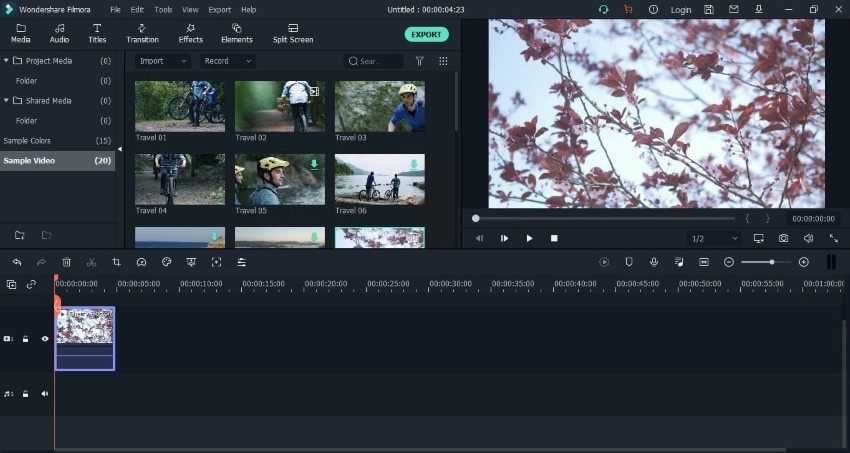
- Wondershare Filmora - Enhanced Royalty-Free Stock Library
- PowerDirector - Top Ranked Video Editor, PC Mag
- APowerEdit - Easiest Way to Edit Videos
- Typito - Video Editing Tool Equivalent of Canva
- Shotcut - Best for Color Adjustments
- AceThinker Video Master - All in one Video Tool
- VideoPad Video Editor - Best for Social Media Work
- Lightworks
- Flexclip - Easy-to-Use Online Editor
- WeVideo - Best for Templates
- OpenShot - Best for Amateurs
Top 2 Picks for iMovie for Windows Alternative
As mentioned above, there’s a lot of video editing software you can use as an iMovie equivalent for Windows. However, they are not of equal quality. Expectedly, some of them are miles better than others. Therefore, it’s best to do your research before installing - or buying one. That allows you to select the best one for you and, thus, ensure your satisfaction.
Here’s a quick comparison of the top 3 iMovie alternatives for Windows:
Wondershare Filmora - Best Overall Video Editing Software
Paid | 4.7 • 693 Ratings
Wondershare Filmora has a slew of powerful video editing tools that let you express your creativity to its fullest. It allows you to make high-quality, impressive, and captivating videos easily.
Free Download For Win 7 or later(64-bit)
Free Download For macOS 10.14 or later
WeVideo - Best For Templates
Paid | 4.5 • 783 Ratings
WeVideo is a web-based video editor with customizable templates perfect for beginners and influencers. It has social media-friendly templates for very specific and popular categories like Unboxings and How-To Makeup.
Ultimate Overview on 11 Best Alternatives to iMovie for Windows
There’s a total of 12 best iMovie alternatives for Windows. Each one is different from the others, but they are all solid choices. Here’s a table showing information about each product:
| Software | OS | Beginner Friendly (score/5) | AI Editing | Royalty-Free Stock Library | Free Trial | Cost-Effective (score/5) |
|---|---|---|---|---|---|---|
| Wondershare Filmora | Windows, Mac | 4.5 | √ | √ | √ | 4.7 |
| PowerDirector | Windows, Mac | 5 | √ | √ | √ | 4.4 |
| APowerEdit | Windows, Mac, Online | 5 | X | X | √ | 4.5 |
| Typito | Windows, Mac | 4.5 | X | √ | √ | 4.2 |
| ShotCut | Windows, Mac, Linux | 3.5 | X | √ | √ | 5 |
| AceThinker Video Master | Windows | 4 | X | √ | √ | 4 |
| VideoPad Video Editor | Windows, Mac, Linux | 4.4 | X | √ | √ | 4.1 |
| LightWorks | Windows, Mac, Linux | 4 | √ | √ | √ | 4 |
| FlexClip | Windows, Mac, Linux | 4 | √ | √ | √ | 4.5 |
| WeVideo | Windows, Mac, Linux | 4 | X | √ | √ | 4.5 |
| OpenShot | Windows, Mac, Linux | 4.5 | √ | X | √ | 4.5 |
11 Best Windows Version of iMovie
All of these 12 iMovie alternatives for Windows 10+ are good choices. However, they have differences, meaning one may be suited for you more than the others. Here’s more information about each one, including the pros and cons, ratings, supported OS, and even user reviews.
1. Wondershare Filmora - Enhanced Royalty-Free Stock Library
Wondershare Filmora is a powerful video editing tool. Its features allow you to showcase your creativity fully. This tool can make your homemade videos look professionally made.
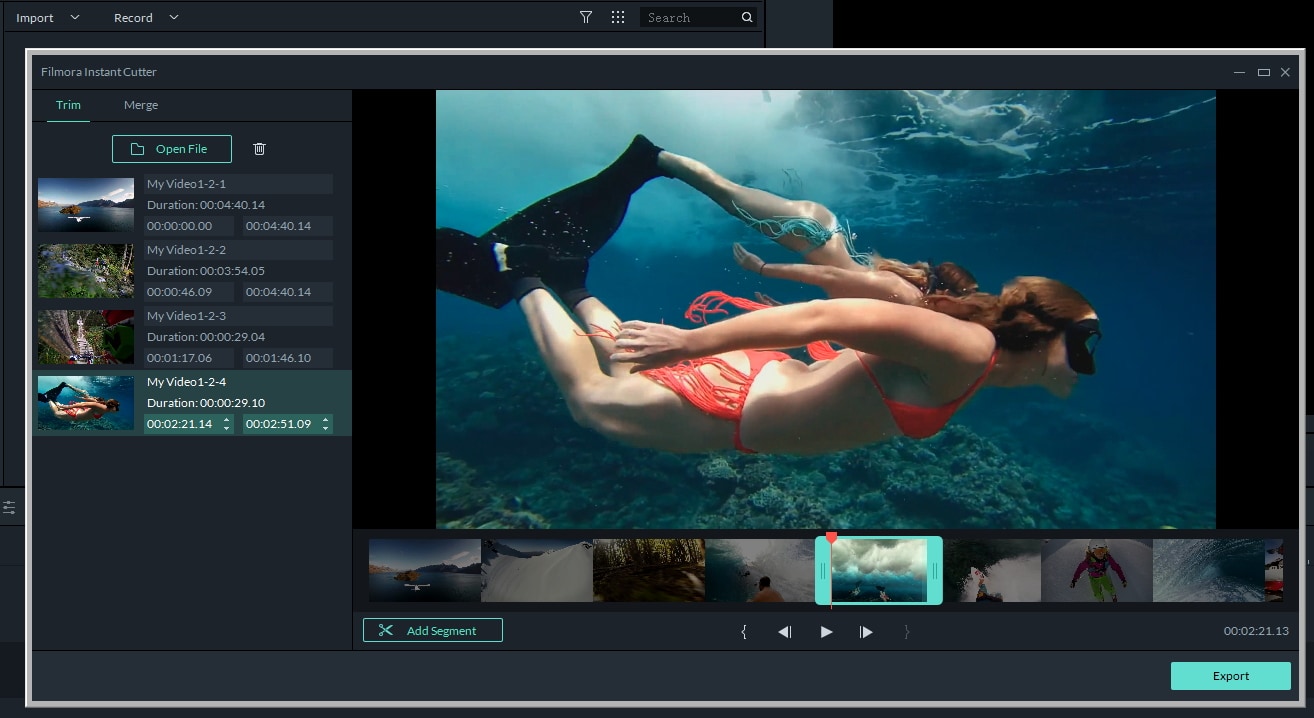
Key Features
- Picture in Picture - Layer in multiple video clips
- Green Screen - Change the video background and add effects using this feature
- Split Screen - Show numerous videos at once with the split screen feature
- Color Match - Save time by applying color correction settings across multiple clips with one click
- Video Stabilizing - Eliminate Camera Shake
- Speech to Text - Convert voice to subtitles in one click
- Text to Speech - Add AI voiceover to liven up your video
Price
Filmora Costs $49.99 per year for individual users. Meanwhile, it costs $155.88 per year for businesses with one user.
Pros
- PCMag says Wondershare Filmora has an eye-soothing interface. It’s not intimidating for beginners. Furthermore, Filmora’s ergonomic design makes it an easy-to-use video editing tool
- Wondershare Filmora has AI editing tools not found on the pre-installed video editor on your Windows PC. As the name suggests, it uses artificial intelligence to apply changes to video clips. Some examples of things you can do with these tools are erasing the background or applying a color correction to all clips with a single mouse click
- Filmora has lots of effects and overlays you can choose from
Cons
- High RAM consumption that can slow down your PC
G2 Rating: 4.5 Stars
Supported OS: Windows , Mac , iPad
User Review
Wondershare Filmora is the video editing software that you need. It has a slew of powerful tools that help you make amazing videos. A TrustRadius Ratings and Review states, “I take advantage of it on a regular basis and make YouTube movies for my shoppers. Simple to create eye-catching movies.”
Takeaway
Wondershare Filmora is filled with AI editing tools that help users produce high-quality videos.
2. PowerDirector - Top Ranked Video Editor, PC Mag
PowerDirector is an iMovie alternative for Windows with a bunch of unique tools and features. Despite being simple and easy to use, it allows you to create Hollywood-level films and clips.
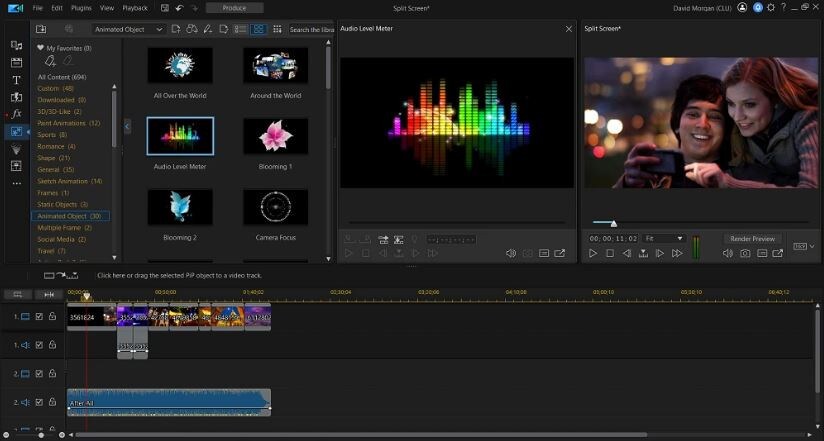
Key Features
- Easy 360-degree video editing
- Keyframing
- Chroma key
- AI Motion Tracking
- Picture in Picture
Price
PowerDirector’s premium subscription costs $4.08/month.
Pros
- User Friendly
- Simple but powerful plugins
- Has AI Editing Tools
- Thousands of built-in transitions, overlay effects, and templates
Cons
- You can’t access the Shutterstock and iStock built-in libraries without a Premium subscription
G2 Rating: 4.5 Stars
User Review
Powerdirector enables you to do world-class video editing; it supports 4k, 60 fps video editing! Additionally, it has lots of stickers, transitions, animations, and many more. A G2 reviewer says, “Go for it, guys! It is one of the best editing platforms in the market.”
Takeaway
PowerDirector’s advanced tools make it among the best iMovie alternatives for Windows 10/11.
3. APowerEdit - Easiest Way to Edit Videos
APowerEdit is a straightforward video editing tool with dozens of transitions, text effects, overlays, and filters.

Key Features
- Supports all common media formats
- Includes dynamic title captions
- Dozens of overlays, transitions, and filters
- Picture in Picture
- Quickly correct brightness, contrast, hue, and saturation
Price
APowerEdit is free software with a paid version that costs$29.95 per month.
Pros
- Easy to navigate due to its user-friendly design
- Lots of export options
- Dozens of editing tools
Cons
- Lacks advanced editing tools needed for bigger projects
Supported OS: Windows, Mac, Online
User Review
APowerEdit is a simple video editing software best for beginners and not-so-tech-savvy users. An AlternativeTo review says, “Apoweredit is super easy to use. It is suitable for beginners like me. Awesome software!”
Takeaway
APowerEdit is a nice tool to have for beginners. However, if you plan to make impressive short films or bigger projects, it is not the ideal software to use.
4. Typito - Video Editing Tool Equivalent of Canva
Typito is like Canva but for videos. It is a web-based video editing software with drag-and-drop features, stylish typography, images, and brand layouts.
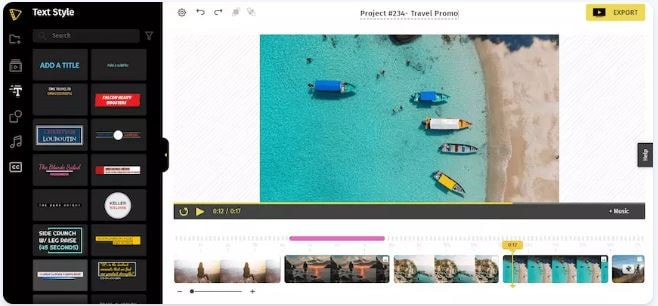
Key Features
- Drag-and-drop interface for easy editing
- Features built for creating engaging social media posts.
- Resize video files fast
- Includes 200+ motion graphic templates
Price
Typito subscriptions start at $15 per month.
Pros
- Easy to use
- Multiple Export Options
- Has all the basic video editing tools
Cons
- Too basic for bigger projects
- The free version has a watermark
G2 Rating: 4.5 Stars
Supported OS: Windows , Mac , Linux
User Review
Typito is a web-based video editor and a simple, easy-to-use tool. It receives continuous updates, so it becomes better and better. A G2 review says , “In Typito, even if you are a “Free” user, you can still create a video that looks so professional as if you paid someone to do it for you.”
Takeaway
Typito’s solid selection of tools is enough for simple projects, and it’s one of the best iMovie alternatives for Windows for social media influencers. However, advanced users may find it a little lacking.
5. Shotcut - Best for Color Adjustments
ShotCut is a completely free iMovie alternative for Windows. This tool is an open-source, cross-platform, video-editing software.
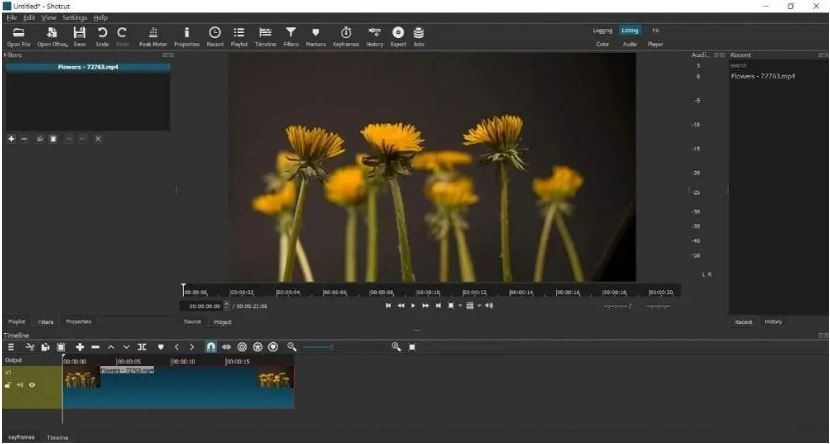
Key Features
- Webcam Capture
- Keyframing
- Auto-Rotate
- Blending Modes
- Unlimited Undo and Redo options
- Powerful color correction tools
Price: Free
Pros
- Because ShotCut is an open-source program, it gets updated regularly by the community
- Completely free
Cons
- No social media integrations
- Not user-friendly
Supported OS: Windows , Mac , Linux
User Review
Shotcut is free video editing software with a toolkit that rivals paid ones. A G2 review states, “We don’t have to pay anything, and we can edit the professional type of videos. It has all the features which any paid software has.”
Takeaway
Do you not want to spend money? If so, Shotcut is the option for you. It also has the strength of being available on many platforms. And because Shotcut is an open-source program, it gets regular updates from the community. However, its interface is not the most beginner-friendly.
6. AceThinker Video Master - All in one Video Tool
AceThinker is a video editor, video converter, and video downloader in one package.
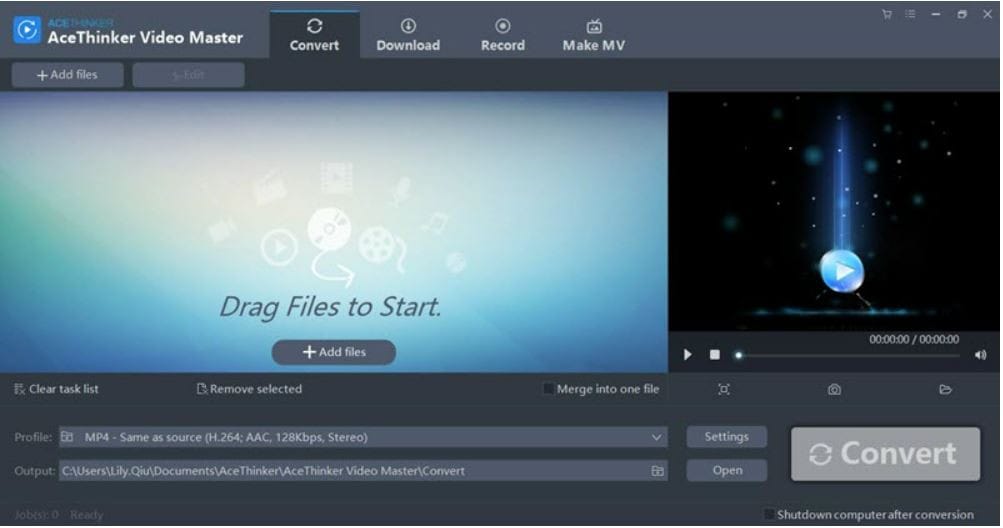
Key Features
- Built-in video player
- HD video converter
- Wide range of customization
- Supports popular video formats
- Basic video editing tools
Price
AceThinker Video Master’s pricing plans start from $29.95.
Pros
- Video converter, downloader, editor, and screen recorder in one
- User-friendly interface
Cons
- Lack of advanced video editing tools
G2 Rating: 5 Stars
User Review
AceThinker Video Master is all about convenience. It provides you with a video editor, downloader, and converter in one package. An educator left a review on G2 ; they say, “This has saved me lost time, increased student engagement, and [it is] a wonderful training tool for other educators.”
Takeaway
Is the storage space in your Windows PC running out? If that’s the case, AceThinker Video Master is a fantastic tool for you. It’s essentially four video apps in one package. And it’s not too shabby as video editing software, either. Expectedly, it’s not the best choice for making short films for competitions and projects of similar or bigger scale.
7. VideoPad Video Editor - Best for Social Media Work
VideoPad Video Editor is among the most impressive iMovie alternatives for Windows. It has powerful tools that will help you create films that would wow the audience.
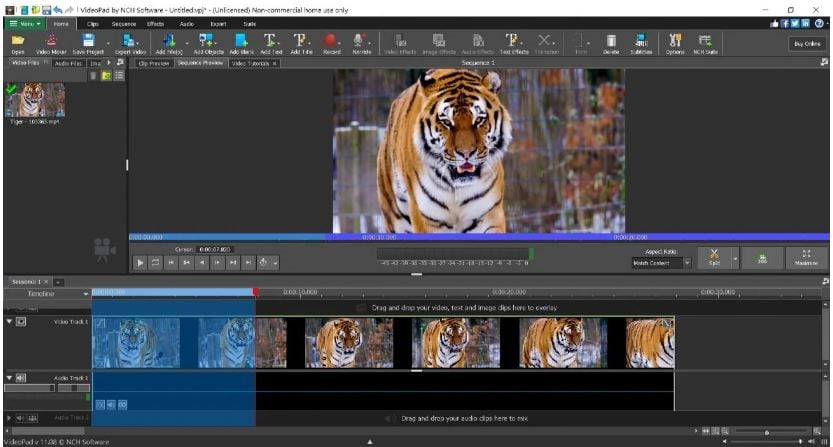
Key Features
- Over 50 Effects and Transitions
- Supports all video formats
- 3D Video Editing
- 360-degree video support
- Chroma key compositing
- Camera Stabilizer
- Speech-to-text feature
Price
VideoPad Home Edition costs $34.99, while the Master’s Edition costs $69.95.
Pros
- Has basic and advanced tools
- Direct upload to popular social media channels
- Fast video stream processor
Cons
- The interface is outdated
- The speech-to-text feature is unreliable
- The free version is full of annoying notifications
G2 Rating: 4 Stars
User Review
VideoPad is an easy-to-learn video editing software full of helpful tools. A G2 reviewer states, “This complete and powerful media editing tool offers a variety of possibilities and possibilities to optimize every clip to the fullest.”
Takeaway
VideoPad Video Editor has many free features you can use to improve your videos. Admittedly, there are problems with some of these features. Nevertheless, this tool is a solid choice for a Windows iMovie alternative.
8. Lightworks
Lightworks Pro is a video editor used to make some Oscar-winning films, and Lightworks is a free and less complicated version of it. However, Lightworks is still not that beginner-friendly. Therefore, it’s best to consider this as an iMovie alternative only if you are an intermediate user.
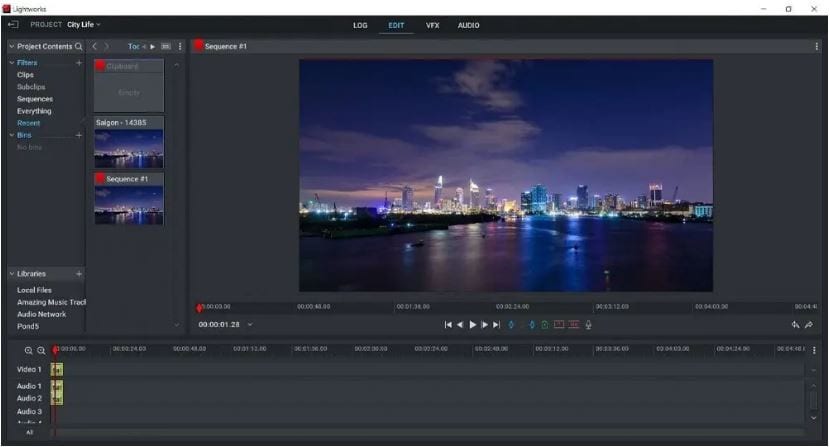
Key Features
- Advanced Color Correction
- Some advanced tools
- Tooltips to help you learn how to use the features
- Integration to Cloud services
- Keyframing
- Advanced audio controls
- Autosave
Price
Lightworks is free, but premium subscriptions for Lightworks Create costs $99.9, and Lightworks Pro costs $24.99.
Pros
- Includes Advanced tools
- You would not lose progress because of the autosave feature
- Good performance
Cons
- Not suited for beginners
- You can only export up to 720p using the free version
G2 Rating: 3.5 Stars
Supported OS Windows , Mac , Linux
User Review
A TrustRadius Ratings and Review says, “Lightworks is a great tool for a non-designer to use because it provides a number of tools and capabilities that can be quickly learned.” However, they note that Lightworks does not provide advanced video editors with all the tools they need. It’s best for intermediate users.
Takeaway
Lightworks is a fantastic alternative to iMovie for Windows 10+ users. However, it requires you to be quite knowledgeable about video editing tools. This editor has a slightly higher learning curve than others. But once you learn how to use Lightworks, creating quality videos would be super easy.
9. Flexclip - Easy-to-Use Online Editor
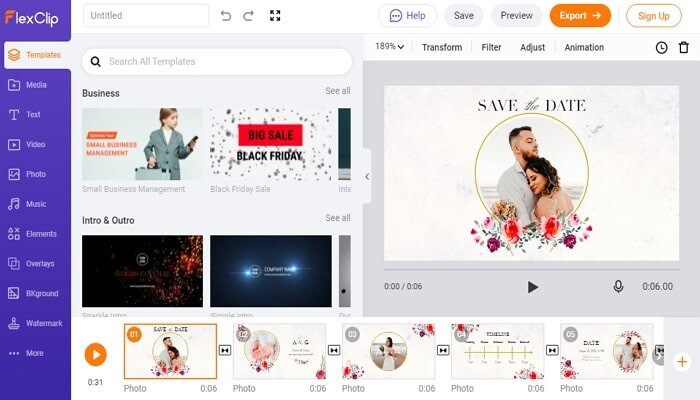
FlexClip is a free online editor. It is a good substitute for iMovie for Windows users, regardless if you are a beginner or a professional.
Key Features
- Dozens of useful tools like background remover and gif maker
- Voice and screen recorder
- Integration with social media platforms
- It supports all the popular video formats
- Allows you to export up to 1080p
Price
FlexClip is free, but premium subscriptions are available. Subscriptions start from $9.99 per month.
Pros
- Includes basic and advanced editing tools
- Easy to share your work on social media platforms
- Allows creation of high-quality videos
Cons
- Long loading time before you can use it
G2 Rating: 4.5 Stars
Supported OS: Windows , Mac , Linux
User Review
FlexClip being an online video editor means one thing; it does not use your PC’s processing power. It also delivers what it promises. A G2 reviewe r says, “I have used many video editing tools so far, but none is close to FlexClip when it comes to video editing.”
Takeaway
You can’t go wrong with FlexClip. It has powerful tools making it a great iMovie alternative for Windows. You don’t even have to install it; it’s an online tool. Unfortunately, that has some downsides. You need to wait for the website to finish loading before working because it scrolls down for each line that gets loaded.
10. WeVideo - Best for Templates
WeVideo includes social-media-friendly templates, making it a fantastic choice for editing popular video categories like How-to, Unboxings, and Makeup tutorials.
Key Features
- Color Correction
- Green Screen Editing Tool
- Has support for square videos (for Instagram) and vertical videos (for TikTok)
- Customizable templates plus dozens of pre-made ones
Price
Premium subscriptions start at $60 per year.
Pros
- Includes basic and advanced video editing tools
- Excellent customer support
- User-friendly
Cons
- The free version has lots of limitations
- Importing videos to the website takes a long time
G2 Rating: 4.4 Stars
Supported OS: Windows , Mac , Linux
User Review
Social media influencers and marketers need to check out WeVideo. A reviewer of this video editing tool on G2 said, “It’s got a handful of Templates that you can use to explore your creativity and inventiveness when creating your content.”
Takeaway
WeVideo is a solid alternative for iMovie for Windows 10/11, but only if you are willing to pay. The free version has lots of restrictions. For example, you can only export 5 minutes of content per month.
11. OpenShot - Best for Amateurs
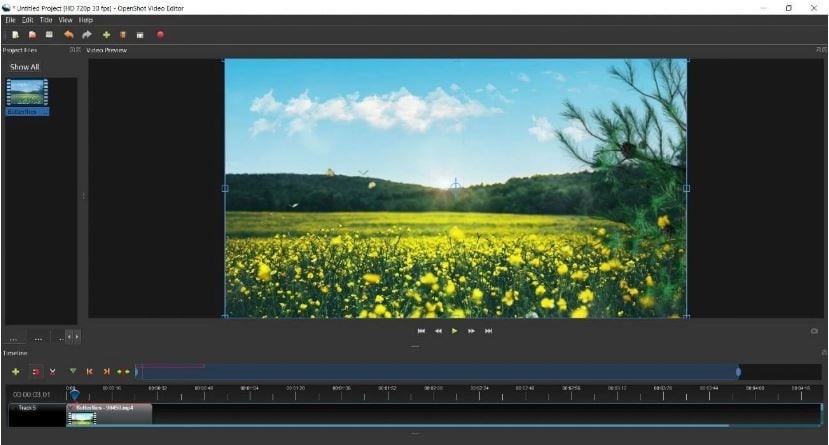
OpenShot has a straightforward interface, making it beginner-friendly. It has some fantastic tools you’ll find helpful. There’s a catch with beginner-friendly editors, though. They don’t have the advanced features you can find on other video editors. You can say that for OpenShot.
Key Features
- 3D Animation
- Text Editor
- Keyframing
- Decent selection of templates and filters
Price: Free
Pros
- Beginner-friendly
- Includes a wide range of editing tools
- Lots of export options
Cons
- Lack of advanced tools like Picture-in-Picture or Chroma Key
- Very laggy to use sometimes
G2 Rating: 4.5 Stars
Supported OS: Windows , Mac , Linux
User Review
OpenShot is a great introductory software for video editing. Its simplicity, ergonomic design, and set of handy tools make it perfect for beginners. A G2 review states, “I do not have a degree in video editing, but the products from my Openshot edits were of high quality.”
Takeaway
Some tools are intimidating for beginners; there are many buttons, and you don’t know what each one does. That’s not a problem when using OpenShot. Its simple interface is easy to understand, making it the best tool for beginners.
How to Edit a Video with an iMovie Alternative on Windows
Knowing which are the best iMovie alternatives on Windows is not enough. Of course, you also need to learn how to use them. Here’s a guide on how to use Wondershare Filmora, the best overall iMovie alternative for Windows.
Step1 Launch Filmora. Then, if you want to, select the aspect ratio.
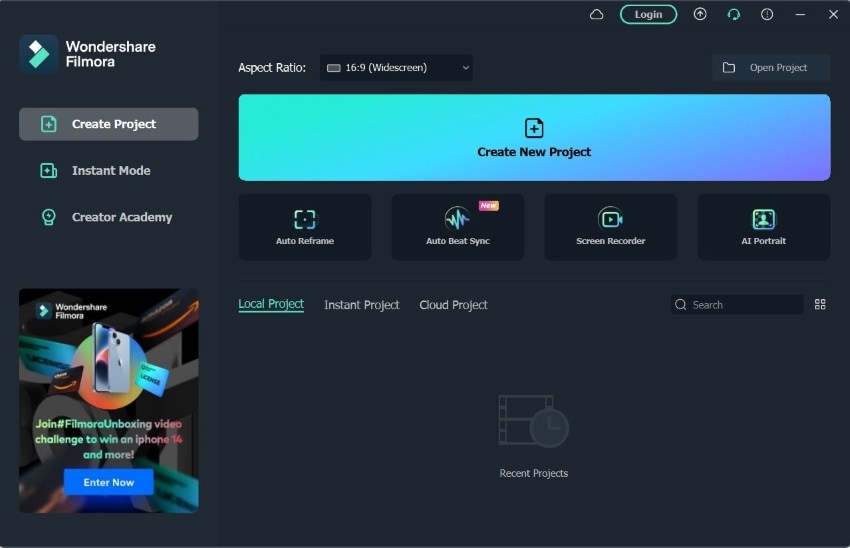
Step2 Click New Project, then wait for the video editor to load. Then, click Register to register the product.
Step3 Select the aspect ratio for the final cut. Click Project Settings from the File menu, then select your desired aspect ratio.
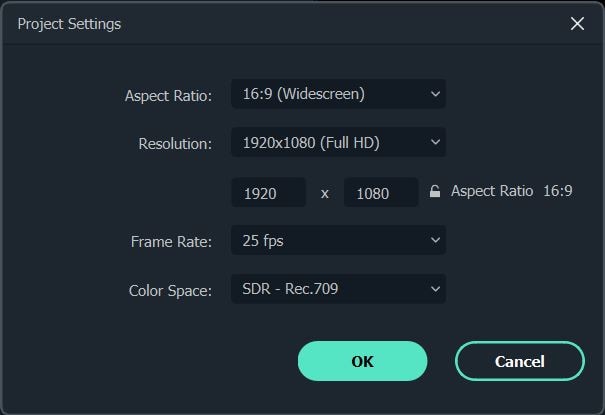
Step4 Import the files you want to edit. Click the Import button in the upper left corner of the video editor. Select Import Media Files, then navigate to the location on your hard drive where the footage you want to edit is stored. Select the files you want to use in your project, then click Import.
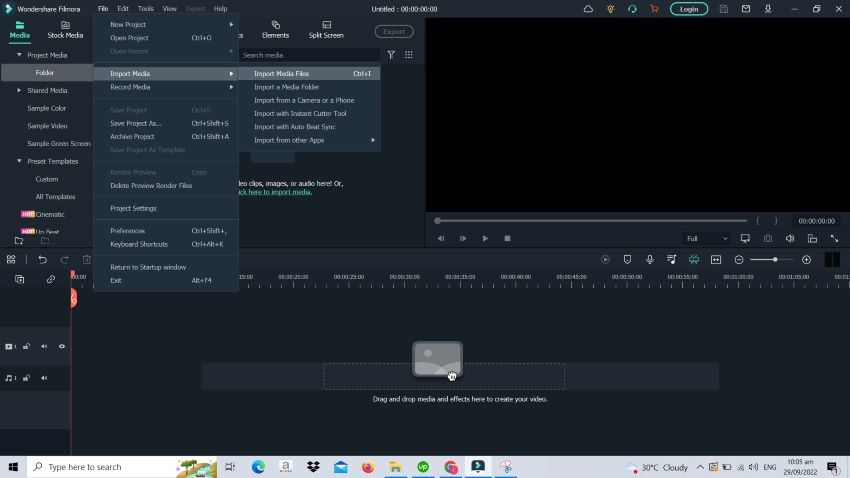
Step5 Drag and drop the files to the timeline. Please note that the last one you add will always be placed after the previous one. Thus, you need to drag the file on the timeline to put it in the desired position. Press Play to preview.
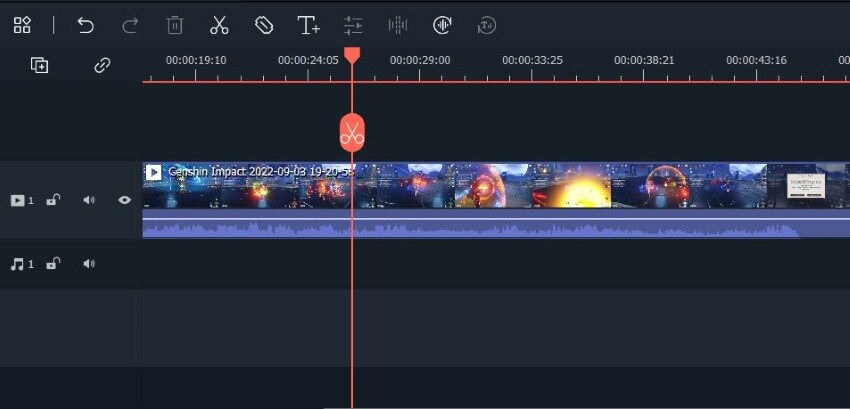
Step6 Apply visual effects, color correction, and other edits you want to make.
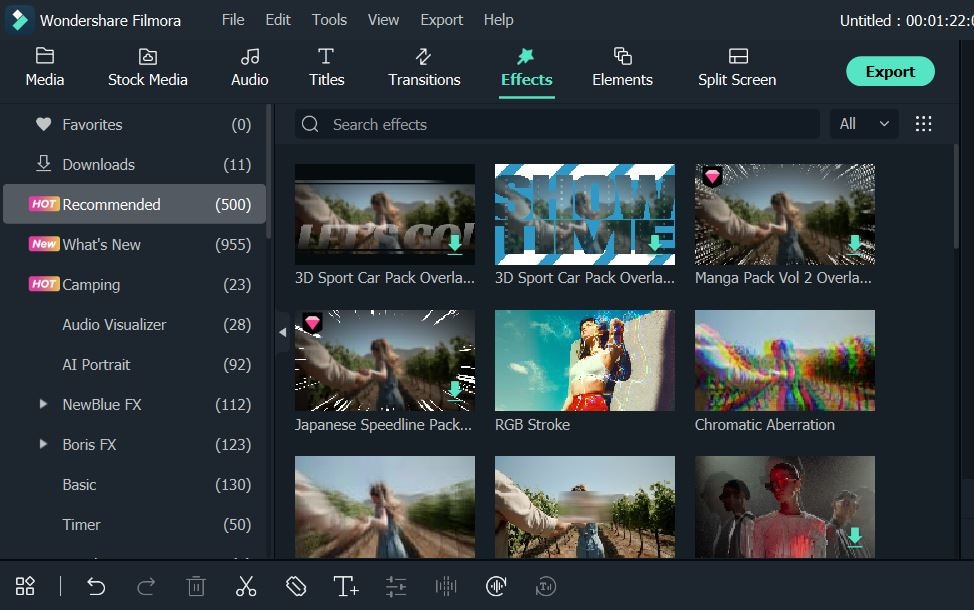
Step7 Click Export to publish your video. Don’t forget to select your desired file format and resolution.
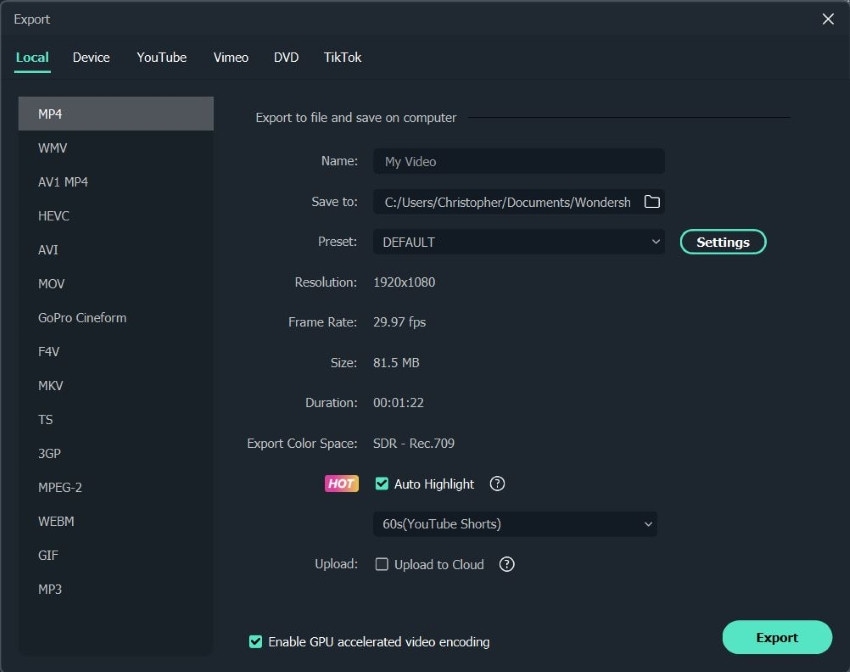
Here’s a video tutorial on how to use Wondershare Filmora
image / video 16:9
Final Words
It’s a shame that iMovie is not available on Windows 10/11 computers. Thankfully, there are alternatives you can use. Wondershare Filmora is an outstanding one. It allows you to do what you can do using iMovie and more.
Free Download For Win 7 or later(64-bit)
Free Download For macOS 10.14 or later
- Wondershare Filmora - Enhanced Royalty-Free Stock Library
- PowerDirector - Top Ranked Video Editor, PC Mag
- APowerEdit - Easiest Way to Edit Videos
- Typito - Video Editing Tool Equivalent of Canva
- Shotcut - Best for Color Adjustments
- AceThinker Video Master - All in one Video Tool
- VideoPad Video Editor - Best for Social Media Work
- Lightworks
- Flexclip - Easy-to-Use Online Editor
- WeVideo - Best for Templates
- OpenShot - Best for Amateurs
- How to Edit a Video with an iMovie Alternative on Windows
Top 2 Picks for iMovie for Windows Alternative
As mentioned above, there’s a lot of video editing software you can use as an iMovie equivalent for Windows. However, they are not of equal quality. Expectedly, some of them are miles better than others. Therefore, it’s best to do your research before installing - or buying one. That allows you to select the best one for you and, thus, ensure your satisfaction.
Here’s a quick comparison of the top 3 iMovie alternatives for Windows:
Wondershare Filmora - Best Overall Video Editing Software
Paid | 4.7 • 693 Ratings
Wondershare Filmora has a slew of powerful video editing tools that let you express your creativity to its fullest. It allows you to make high-quality, impressive, and captivating videos easily.
Free Download For Win 7 or later(64-bit)
Free Download For macOS 10.14 or later
WeVideo - Best For Templates
Paid | 4.5 • 783 Ratings
WeVideo is a web-based video editor with customizable templates perfect for beginners and influencers. It has social media-friendly templates for very specific and popular categories like Unboxings and How-To Makeup.
Ultimate Overview on 11 Best Alternatives to iMovie for Windows
There’s a total of 12 best iMovie alternatives for Windows. Each one is different from the others, but they are all solid choices. Here’s a table showing information about each product:
| Software | OS | Beginner Friendly (score/5) | AI Editing | Royalty-Free Stock Library | Free Trial | Cost-Effective (score/5) |
|---|---|---|---|---|---|---|
| Wondershare Filmora | Windows, Mac | 4.5 | √ | √ | √ | 4.7 |
| PowerDirector | Windows, Mac | 5 | √ | √ | √ | 4.4 |
| APowerEdit | Windows, Mac, Online | 5 | X | X | √ | 4.5 |
| Typito | Windows, Mac | 4.5 | X | √ | √ | 4.2 |
| ShotCut | Windows, Mac, Linux | 3.5 | X | √ | √ | 5 |
| AceThinker Video Master | Windows | 4 | X | √ | √ | 4 |
| VideoPad Video Editor | Windows, Mac, Linux | 4.4 | X | √ | √ | 4.1 |
| LightWorks | Windows, Mac, Linux | 4 | √ | √ | √ | 4 |
| FlexClip | Windows, Mac, Linux | 4 | √ | √ | √ | 4.5 |
| WeVideo | Windows, Mac, Linux | 4 | X | √ | √ | 4.5 |
| OpenShot | Windows, Mac, Linux | 4.5 | √ | X | √ | 4.5 |
11 Best Windows Version of iMovie
All of these 12 iMovie alternatives for Windows 10+ are good choices. However, they have differences, meaning one may be suited for you more than the others. Here’s more information about each one, including the pros and cons, ratings, supported OS, and even user reviews.
1. Wondershare Filmora - Enhanced Royalty-Free Stock Library
Wondershare Filmora is a powerful video editing tool. Its features allow you to showcase your creativity fully. This tool can make your homemade videos look professionally made.

Key Features
- Picture in Picture - Layer in multiple video clips
- Green Screen - Change the video background and add effects using this feature
- Split Screen - Show numerous videos at once with the split screen feature
- Color Match - Save time by applying color correction settings across multiple clips with one click
- Video Stabilizing - Eliminate Camera Shake
- Speech to Text - Convert voice to subtitles in one click
- Text to Speech - Add AI voiceover to liven up your video
Price
Filmora Costs $49.99 per year for individual users. Meanwhile, it costs $155.88 per year for businesses with one user.
Pros
- PCMag says Wondershare Filmora has an eye-soothing interface. It’s not intimidating for beginners. Furthermore, Filmora’s ergonomic design makes it an easy-to-use video editing tool
- Wondershare Filmora has AI editing tools not found on the pre-installed video editor on your Windows PC. As the name suggests, it uses artificial intelligence to apply changes to video clips. Some examples of things you can do with these tools are erasing the background or applying a color correction to all clips with a single mouse click
- Filmora has lots of effects and overlays you can choose from
Cons
- High RAM consumption that can slow down your PC
G2 Rating: 4.5 Stars
Supported OS: Windows , Mac , iPad
User Review
Wondershare Filmora is the video editing software that you need. It has a slew of powerful tools that help you make amazing videos. A TrustRadius Ratings and Review states, “I take advantage of it on a regular basis and make YouTube movies for my shoppers. Simple to create eye-catching movies.”
Takeaway
Wondershare Filmora is filled with AI editing tools that help users produce high-quality videos.
2. PowerDirector - Top Ranked Video Editor, PC Mag
PowerDirector is an iMovie alternative for Windows with a bunch of unique tools and features. Despite being simple and easy to use, it allows you to create Hollywood-level films and clips.

Key Features
- Easy 360-degree video editing
- Keyframing
- Chroma key
- AI Motion Tracking
- Picture in Picture
Price
PowerDirector’s premium subscription costs $4.08/month.
Pros
- User Friendly
- Simple but powerful plugins
- Has AI Editing Tools
- Thousands of built-in transitions, overlay effects, and templates
Cons
- You can’t access the Shutterstock and iStock built-in libraries without a Premium subscription
G2 Rating: 4.5 Stars
User Review
Powerdirector enables you to do world-class video editing; it supports 4k, 60 fps video editing! Additionally, it has lots of stickers, transitions, animations, and many more. A G2 reviewer says, “Go for it, guys! It is one of the best editing platforms in the market.”
Takeaway
PowerDirector’s advanced tools make it among the best iMovie alternatives for Windows 10/11.
3. APowerEdit - Easiest Way to Edit Videos
APowerEdit is a straightforward video editing tool with dozens of transitions, text effects, overlays, and filters.

Key Features
- Supports all common media formats
- Includes dynamic title captions
- Dozens of overlays, transitions, and filters
- Picture in Picture
- Quickly correct brightness, contrast, hue, and saturation
Price
APowerEdit is free software with a paid version that costs$29.95 per month.
Pros
- Easy to navigate due to its user-friendly design
- Lots of export options
- Dozens of editing tools
Cons
- Lacks advanced editing tools needed for bigger projects
Supported OS: Windows, Mac, Online
User Review
APowerEdit is a simple video editing software best for beginners and not-so-tech-savvy users. An AlternativeTo review says, “Apoweredit is super easy to use. It is suitable for beginners like me. Awesome software!”
Takeaway
APowerEdit is a nice tool to have for beginners. However, if you plan to make impressive short films or bigger projects, it is not the ideal software to use.
4. Typito - Video Editing Tool Equivalent of Canva
Typito is like Canva but for videos. It is a web-based video editing software with drag-and-drop features, stylish typography, images, and brand layouts.

Key Features
- Drag-and-drop interface for easy editing
- Features built for creating engaging social media posts.
- Resize video files fast
- Includes 200+ motion graphic templates
Price
Typito subscriptions start at $15 per month.
Pros
- Easy to use
- Multiple Export Options
- Has all the basic video editing tools
Cons
- Too basic for bigger projects
- The free version has a watermark
G2 Rating: 4.5 Stars
Supported OS: Windows , Mac , Linux
User Review
Typito is a web-based video editor and a simple, easy-to-use tool. It receives continuous updates, so it becomes better and better. A G2 review says , “In Typito, even if you are a “Free” user, you can still create a video that looks so professional as if you paid someone to do it for you.”
Takeaway
Typito’s solid selection of tools is enough for simple projects, and it’s one of the best iMovie alternatives for Windows for social media influencers. However, advanced users may find it a little lacking.
5. Shotcut - Best for Color Adjustments
ShotCut is a completely free iMovie alternative for Windows. This tool is an open-source, cross-platform, video-editing software.

Key Features
- Webcam Capture
- Keyframing
- Auto-Rotate
- Blending Modes
- Unlimited Undo and Redo options
- Powerful color correction tools
Price: Free
Pros
- Because ShotCut is an open-source program, it gets updated regularly by the community
- Completely free
Cons
- No social media integrations
- Not user-friendly
Supported OS: Windows , Mac , Linux
User Review
Shotcut is free video editing software with a toolkit that rivals paid ones. A G2 review states, “We don’t have to pay anything, and we can edit the professional type of videos. It has all the features which any paid software has.”
Takeaway
Do you not want to spend money? If so, Shotcut is the option for you. It also has the strength of being available on many platforms. And because Shotcut is an open-source program, it gets regular updates from the community. However, its interface is not the most beginner-friendly.
6. AceThinker Video Master - All in one Video Tool
AceThinker is a video editor, video converter, and video downloader in one package.

Key Features
- Built-in video player
- HD video converter
- Wide range of customization
- Supports popular video formats
- Basic video editing tools
Price
AceThinker Video Master’s pricing plans start from $29.95.
Pros
- Video converter, downloader, editor, and screen recorder in one
- User-friendly interface
Cons
- Lack of advanced video editing tools
G2 Rating: 5 Stars
User Review
AceThinker Video Master is all about convenience. It provides you with a video editor, downloader, and converter in one package. An educator left a review on G2 ; they say, “This has saved me lost time, increased student engagement, and [it is] a wonderful training tool for other educators.”
Takeaway
Is the storage space in your Windows PC running out? If that’s the case, AceThinker Video Master is a fantastic tool for you. It’s essentially four video apps in one package. And it’s not too shabby as video editing software, either. Expectedly, it’s not the best choice for making short films for competitions and projects of similar or bigger scale.
7. VideoPad Video Editor - Best for Social Media Work
VideoPad Video Editor is among the most impressive iMovie alternatives for Windows. It has powerful tools that will help you create films that would wow the audience.

Key Features
- Over 50 Effects and Transitions
- Supports all video formats
- 3D Video Editing
- 360-degree video support
- Chroma key compositing
- Camera Stabilizer
- Speech-to-text feature
Price
VideoPad Home Edition costs $34.99, while the Master’s Edition costs $69.95.
Pros
- Has basic and advanced tools
- Direct upload to popular social media channels
- Fast video stream processor
Cons
- The interface is outdated
- The speech-to-text feature is unreliable
- The free version is full of annoying notifications
G2 Rating: 4 Stars
User Review
VideoPad is an easy-to-learn video editing software full of helpful tools. A G2 reviewer states, “This complete and powerful media editing tool offers a variety of possibilities and possibilities to optimize every clip to the fullest.”
Takeaway
VideoPad Video Editor has many free features you can use to improve your videos. Admittedly, there are problems with some of these features. Nevertheless, this tool is a solid choice for a Windows iMovie alternative.
8. Lightworks
Lightworks Pro is a video editor used to make some Oscar-winning films, and Lightworks is a free and less complicated version of it. However, Lightworks is still not that beginner-friendly. Therefore, it’s best to consider this as an iMovie alternative only if you are an intermediate user.

Key Features
- Advanced Color Correction
- Some advanced tools
- Tooltips to help you learn how to use the features
- Integration to Cloud services
- Keyframing
- Advanced audio controls
- Autosave
Price
Lightworks is free, but premium subscriptions for Lightworks Create costs $99.9, and Lightworks Pro costs $24.99.
Pros
- Includes Advanced tools
- You would not lose progress because of the autosave feature
- Good performance
Cons
- Not suited for beginners
- You can only export up to 720p using the free version
G2 Rating: 3.5 Stars
Supported OS Windows , Mac , Linux
User Review
A TrustRadius Ratings and Review says, “Lightworks is a great tool for a non-designer to use because it provides a number of tools and capabilities that can be quickly learned.” However, they note that Lightworks does not provide advanced video editors with all the tools they need. It’s best for intermediate users.
Takeaway
Lightworks is a fantastic alternative to iMovie for Windows 10+ users. However, it requires you to be quite knowledgeable about video editing tools. This editor has a slightly higher learning curve than others. But once you learn how to use Lightworks, creating quality videos would be super easy.
9. Flexclip - Easy-to-Use Online Editor

FlexClip is a free online editor. It is a good substitute for iMovie for Windows users, regardless if you are a beginner or a professional.
Key Features
- Dozens of useful tools like background remover and gif maker
- Voice and screen recorder
- Integration with social media platforms
- It supports all the popular video formats
- Allows you to export up to 1080p
Price
FlexClip is free, but premium subscriptions are available. Subscriptions start from $9.99 per month.
Pros
- Includes basic and advanced editing tools
- Easy to share your work on social media platforms
- Allows creation of high-quality videos
Cons
- Long loading time before you can use it
G2 Rating: 4.5 Stars
Supported OS: Windows , Mac , Linux
User Review
FlexClip being an online video editor means one thing; it does not use your PC’s processing power. It also delivers what it promises. A G2 reviewe r says, “I have used many video editing tools so far, but none is close to FlexClip when it comes to video editing.”
Takeaway
You can’t go wrong with FlexClip. It has powerful tools making it a great iMovie alternative for Windows. You don’t even have to install it; it’s an online tool. Unfortunately, that has some downsides. You need to wait for the website to finish loading before working because it scrolls down for each line that gets loaded.
10. WeVideo - Best for Templates
WeVideo includes social-media-friendly templates, making it a fantastic choice for editing popular video categories like How-to, Unboxings, and Makeup tutorials.
Key Features
- Color Correction
- Green Screen Editing Tool
- Has support for square videos (for Instagram) and vertical videos (for TikTok)
- Customizable templates plus dozens of pre-made ones
Price
Premium subscriptions start at $60 per year.
Pros
- Includes basic and advanced video editing tools
- Excellent customer support
- User-friendly
Cons
- The free version has lots of limitations
- Importing videos to the website takes a long time
G2 Rating: 4.4 Stars
Supported OS: Windows , Mac , Linux
User Review
Social media influencers and marketers need to check out WeVideo. A reviewer of this video editing tool on G2 said, “It’s got a handful of Templates that you can use to explore your creativity and inventiveness when creating your content.”
Takeaway
WeVideo is a solid alternative for iMovie for Windows 10/11, but only if you are willing to pay. The free version has lots of restrictions. For example, you can only export 5 minutes of content per month.
11. OpenShot - Best for Amateurs

OpenShot has a straightforward interface, making it beginner-friendly. It has some fantastic tools you’ll find helpful. There’s a catch with beginner-friendly editors, though. They don’t have the advanced features you can find on other video editors. You can say that for OpenShot.
Key Features
- 3D Animation
- Text Editor
- Keyframing
- Decent selection of templates and filters
Price: Free
Pros
- Beginner-friendly
- Includes a wide range of editing tools
- Lots of export options
Cons
- Lack of advanced tools like Picture-in-Picture or Chroma Key
- Very laggy to use sometimes
G2 Rating: 4.5 Stars
Supported OS: Windows , Mac , Linux
User Review
OpenShot is a great introductory software for video editing. Its simplicity, ergonomic design, and set of handy tools make it perfect for beginners. A G2 review states, “I do not have a degree in video editing, but the products from my Openshot edits were of high quality.”
Takeaway
Some tools are intimidating for beginners; there are many buttons, and you don’t know what each one does. That’s not a problem when using OpenShot. Its simple interface is easy to understand, making it the best tool for beginners.
How to Edit a Video with an iMovie Alternative on Windows
Knowing which are the best iMovie alternatives on Windows is not enough. Of course, you also need to learn how to use them. Here’s a guide on how to use Wondershare Filmora, the best overall iMovie alternative for Windows.
Step1 Launch Filmora. Then, if you want to, select the aspect ratio.

Step2 Click New Project, then wait for the video editor to load. Then, click Register to register the product.
Step3 Select the aspect ratio for the final cut. Click Project Settings from the File menu, then select your desired aspect ratio.

Step4 Import the files you want to edit. Click the Import button in the upper left corner of the video editor. Select Import Media Files, then navigate to the location on your hard drive where the footage you want to edit is stored. Select the files you want to use in your project, then click Import.

Step5 Drag and drop the files to the timeline. Please note that the last one you add will always be placed after the previous one. Thus, you need to drag the file on the timeline to put it in the desired position. Press Play to preview.

Step6 Apply visual effects, color correction, and other edits you want to make.

Step7 Click Export to publish your video. Don’t forget to select your desired file format and resolution.

Here’s a video tutorial on how to use Wondershare Filmora
image / video 16:9
Final Words
It’s a shame that iMovie is not available on Windows 10/11 computers. Thankfully, there are alternatives you can use. Wondershare Filmora is an outstanding one. It allows you to do what you can do using iMovie and more.
Free Download For Win 7 or later(64-bit)
Free Download For macOS 10.14 or later
Premiere Pro Compatibility: Ensure Smooth Performance on Your Computer
System Requirements for Running Premiere Pro: How to Set Up Computer

Benjamin Arango
Mar 27, 2024• Proven solutions
We all know that Adobe Premiere Pro is one of the best professional video editing software, while to run such a powerful video editing software, you may need a powerful windows PC or Mac as well. Though most modern computer systems can run Adobe Premiere out of the box, there are some steps to take, and potential decisions to make, before installing the software, or if you are building or buying a new computer to make sure you get the best experience possible with the software.
You may also like:Best Adobe Premiere Alternatives >>
Minimum system requirement to run Premiere Pro on Windows and Mac in 2019
Your computer should at least to meet the minimum specification below to run Premiere Pro, and if you need to edit some VR videos, your computer configuration should be higher according to the minimum specifications list on their website .
- Intel 6th or newer CPU
- Windows 10 (64-bit) 1703 or later/ MacOS V10.12 later
- 16GB RAM; 4GB GPU VRAM
- Fast internal SSD
- 1920*1080 Display resolution
- 32-bit video card
- Internet connection
However, it is important to remember this is the minimum specification, and will not necessarily give a satisfactory user experience. The recommended specifications are far more likely to provide the kind of performance expected of the software and those would be the ones to use as a guide for the minimum spec for a new computer or any upgrades being planned prior to installation.
How to check Computer Specifications
Since Premiere Pro CC only works on Windows 10 system after 2018 13.0 release, we will show you how to check if your PC meets the requirements to run Premiere Pro on Windows 10
- Press Windows Key+ E on the keyboard to bring up Windows Explorer.
- Right click the This PC option in the sidebar and then select Properties from the context menu.

- The system specification window will show up which you see the Processor, RAM, system type and other system information.
Checking the specification on your Mac is easy, just click the Apple icon in the top-left corner of your Mac, and then select About This Mac option. In the pop-up window you will see the information including Processor speed, memory and graphic card etc.
How to Set Up Computer for Premiere
1. Processor
Whilst the software will run on a Core2Duo intel or Phenom II AMD processor, it is worth noting that rendering can be highly intensive work for the processor and the fastest possible processor within your budget will pay dividends in speed of editing. In general, even a Core I3, the cheapest of the current Intel range, will be significantly faster than older processors, but because Premiere happily uses multi cored processors to their full, if the budget can reach to a quad core or more processor then do so, Premiere is a piece of software that benefits from the computational power increase more than most.
2. Memory
The next consideration is memory. The minimum specification suggests 4GB of RAM with 8GB recommended, for reliable and smooth running consider 8GB minimum, and go for as much as you can. For a computer that is used for other activities as well, multitasking can see even 24GB of Ram being fully utilized, especially if you are working on HD content. Speaking of content, this is the other aspect of memory to look at. Whilst you can use a storage drive that contains everything else on your computer to keep the media you are working on, for HD content especially, and for trouble free and the fastest possible operation it is advisable to reserve a single drive, preferably a 7200 RPM or faster one, exclusively for your media. Bandwidth and access times means Premiere will be significantly faster in operation with its media on a dedicated drive.
3. Graphic
The final aspect of specification to consider is graphics. Adobe Premiere uses a feature called the Mercury Playback Engine that allows much faster and smoother playback of video without rendering, it has two modes, software only and GPU acceleration mode (Using either CUDA or OpenCL). The GPU acceleration mode offers significant performance increases and is therefore highly desirable. However, not all GPU’s are compatible with the Mercury Playback Engine, the list of those that are is found on the previously linked specification page, so if a new computer is being built or purchased, or upgrades are being considered prior to install, it is highly desirable to utilize a compatible GPU where possible.
5. Settings
Having covered the basic specifications of a computer that will enhance the operation of Premiere, it is now time to look at the computer settings and how this can affect Premiere’s performance and usability.
The first thing to understand is that video editing, especially HD video, is bandwidth intensive, in effect, it fills up the lanes between the CPU, RAM, GPU and Hard Drive during operation. Spreading the use of that bandwidth over several devices can see huge performance gains, so one of the best ways to optimize the computer for Premier is to adjust how the hard drives are used. How effective this can be depends on the computer you are using, so we will try to cover a few different possibilities here.
6. Drive
If your computer contains a single drive, simply install Premiere and start using it, there are no options available here. If there are two drives, keep one for the operating system, programs and cache files. Use the second drive exclusively for video project files, exported projects and previews.
If the computer has three drives then keep one for the operating system and programs, the second one for the video project files, and use the third for previews, cache files and exported projects.
If you have access to even more drives, then split the cache from the previews, and ultimately have one drive each for previews, exports and cache. Spreading the files across as many drives as possible enhances performance by enabling the different read/write operations to occur without interference from each other.
That is the theory, but how do you achieve this? This is done within Premiere itself, there are two parts, accessing where the media cache files are placed is done though the edit menu, following the path edit > preferences > media.

Changing where the project files, previews and exports are stored is just as easy, and is accessed via the project menu by taking the path project > project settings > scratchdisks.

7. Sequence Setting
When working with Premiere it is important to have the correct settings for the type of media you are using and the nature of the final output. This is done within Premiere by a function known as a Sequence.
After creating a new project you are presented with the sequence dialogue box. You can have as many sequences in a single project as you like, but Premiere always assumes you require at least one and so needs the first one to be created to allow work on a project. Any media, both audio and video, placed into a sequence is automatically adapted to the settings of that sequence, so you will want to choose settings that match the original media as closely as possible. Each sequence in a project can have different settings if required, as this lessens the workload on the CPU and makes the process faster and smoother.
The sequence dialogue has three tabs, Sequence Presets, Settings and Tracks
The Preset Tab makes setting up a new sequence much simpler. Choosing a preset enables Premiere to choose the settings that best match the chosen video and audio format. There are a wide range of presets available to suit the most commonly used media types, they are organized based on camera formats. Within each group there are numerous settings and configurations to choose from based around frame sizes and interlacing. Whilst choosing the correct preset can be a little daunting to the uninitiated, ensuring the number of frames per second, the frame size and codec are correct is all that is required.

Once the preset is chosen you can move to the settings tab to adjust the preset manually. Some settings will not be adjustable in this tab due to the specific optimization required for the input media.
Because the presets do such a good job it is not really necessary to adjust anything in the settings tab, and unless you are trying to do something very specific.
While the standard presets are usually suitable, on occasion you may desire a custom setting. To do this, choose a sequence preset that is close to your media, and then make custom selections in the Settings tab. By selecting the Save Preset option on the Settings tab you can then create a custom setting with those parameters. Give the preset a suitable name in the Save Settings dialog and add any notes that are needed. The preset can be found in the Custom folder under Available Presets.
Those with the Apple Prores Codec on their computers can use this as the preview codec if required. By choosing Quicktime as the preview format in a custom editing mode, and lastly Apple Prores as the required codec.
Conclusion
If your computer failed to meet the requirement to run Premiere Pro, you may need to spend some money to buy a powerful computer or choose another professional video editing software similar to Premiere Pro, or choose a video editing software. If your computer isn’t powerful enough to run Premiere Pro, you will get awful experience at editing footage because of the long loading time and stuck playback.

Benjamin Arango
Benjamin Arango is a writer and a lover of all things video.
Follow @Benjamin Arango
Benjamin Arango
Mar 27, 2024• Proven solutions
We all know that Adobe Premiere Pro is one of the best professional video editing software, while to run such a powerful video editing software, you may need a powerful windows PC or Mac as well. Though most modern computer systems can run Adobe Premiere out of the box, there are some steps to take, and potential decisions to make, before installing the software, or if you are building or buying a new computer to make sure you get the best experience possible with the software.
You may also like:Best Adobe Premiere Alternatives >>
Minimum system requirement to run Premiere Pro on Windows and Mac in 2019
Your computer should at least to meet the minimum specification below to run Premiere Pro, and if you need to edit some VR videos, your computer configuration should be higher according to the minimum specifications list on their website .
- Intel 6th or newer CPU
- Windows 10 (64-bit) 1703 or later/ MacOS V10.12 later
- 16GB RAM; 4GB GPU VRAM
- Fast internal SSD
- 1920*1080 Display resolution
- 32-bit video card
- Internet connection
However, it is important to remember this is the minimum specification, and will not necessarily give a satisfactory user experience. The recommended specifications are far more likely to provide the kind of performance expected of the software and those would be the ones to use as a guide for the minimum spec for a new computer or any upgrades being planned prior to installation.
How to check Computer Specifications
Since Premiere Pro CC only works on Windows 10 system after 2018 13.0 release, we will show you how to check if your PC meets the requirements to run Premiere Pro on Windows 10
- Press Windows Key+ E on the keyboard to bring up Windows Explorer.
- Right click the This PC option in the sidebar and then select Properties from the context menu.

- The system specification window will show up which you see the Processor, RAM, system type and other system information.
Checking the specification on your Mac is easy, just click the Apple icon in the top-left corner of your Mac, and then select About This Mac option. In the pop-up window you will see the information including Processor speed, memory and graphic card etc.
How to Set Up Computer for Premiere
1. Processor
Whilst the software will run on a Core2Duo intel or Phenom II AMD processor, it is worth noting that rendering can be highly intensive work for the processor and the fastest possible processor within your budget will pay dividends in speed of editing. In general, even a Core I3, the cheapest of the current Intel range, will be significantly faster than older processors, but because Premiere happily uses multi cored processors to their full, if the budget can reach to a quad core or more processor then do so, Premiere is a piece of software that benefits from the computational power increase more than most.
2. Memory
The next consideration is memory. The minimum specification suggests 4GB of RAM with 8GB recommended, for reliable and smooth running consider 8GB minimum, and go for as much as you can. For a computer that is used for other activities as well, multitasking can see even 24GB of Ram being fully utilized, especially if you are working on HD content. Speaking of content, this is the other aspect of memory to look at. Whilst you can use a storage drive that contains everything else on your computer to keep the media you are working on, for HD content especially, and for trouble free and the fastest possible operation it is advisable to reserve a single drive, preferably a 7200 RPM or faster one, exclusively for your media. Bandwidth and access times means Premiere will be significantly faster in operation with its media on a dedicated drive.
3. Graphic
The final aspect of specification to consider is graphics. Adobe Premiere uses a feature called the Mercury Playback Engine that allows much faster and smoother playback of video without rendering, it has two modes, software only and GPU acceleration mode (Using either CUDA or OpenCL). The GPU acceleration mode offers significant performance increases and is therefore highly desirable. However, not all GPU’s are compatible with the Mercury Playback Engine, the list of those that are is found on the previously linked specification page, so if a new computer is being built or purchased, or upgrades are being considered prior to install, it is highly desirable to utilize a compatible GPU where possible.
5. Settings
Having covered the basic specifications of a computer that will enhance the operation of Premiere, it is now time to look at the computer settings and how this can affect Premiere’s performance and usability.
The first thing to understand is that video editing, especially HD video, is bandwidth intensive, in effect, it fills up the lanes between the CPU, RAM, GPU and Hard Drive during operation. Spreading the use of that bandwidth over several devices can see huge performance gains, so one of the best ways to optimize the computer for Premier is to adjust how the hard drives are used. How effective this can be depends on the computer you are using, so we will try to cover a few different possibilities here.
6. Drive
If your computer contains a single drive, simply install Premiere and start using it, there are no options available here. If there are two drives, keep one for the operating system, programs and cache files. Use the second drive exclusively for video project files, exported projects and previews.
If the computer has three drives then keep one for the operating system and programs, the second one for the video project files, and use the third for previews, cache files and exported projects.
If you have access to even more drives, then split the cache from the previews, and ultimately have one drive each for previews, exports and cache. Spreading the files across as many drives as possible enhances performance by enabling the different read/write operations to occur without interference from each other.
That is the theory, but how do you achieve this? This is done within Premiere itself, there are two parts, accessing where the media cache files are placed is done though the edit menu, following the path edit > preferences > media.

Changing where the project files, previews and exports are stored is just as easy, and is accessed via the project menu by taking the path project > project settings > scratchdisks.

7. Sequence Setting
When working with Premiere it is important to have the correct settings for the type of media you are using and the nature of the final output. This is done within Premiere by a function known as a Sequence.
After creating a new project you are presented with the sequence dialogue box. You can have as many sequences in a single project as you like, but Premiere always assumes you require at least one and so needs the first one to be created to allow work on a project. Any media, both audio and video, placed into a sequence is automatically adapted to the settings of that sequence, so you will want to choose settings that match the original media as closely as possible. Each sequence in a project can have different settings if required, as this lessens the workload on the CPU and makes the process faster and smoother.
The sequence dialogue has three tabs, Sequence Presets, Settings and Tracks
The Preset Tab makes setting up a new sequence much simpler. Choosing a preset enables Premiere to choose the settings that best match the chosen video and audio format. There are a wide range of presets available to suit the most commonly used media types, they are organized based on camera formats. Within each group there are numerous settings and configurations to choose from based around frame sizes and interlacing. Whilst choosing the correct preset can be a little daunting to the uninitiated, ensuring the number of frames per second, the frame size and codec are correct is all that is required.

Once the preset is chosen you can move to the settings tab to adjust the preset manually. Some settings will not be adjustable in this tab due to the specific optimization required for the input media.
Because the presets do such a good job it is not really necessary to adjust anything in the settings tab, and unless you are trying to do something very specific.
While the standard presets are usually suitable, on occasion you may desire a custom setting. To do this, choose a sequence preset that is close to your media, and then make custom selections in the Settings tab. By selecting the Save Preset option on the Settings tab you can then create a custom setting with those parameters. Give the preset a suitable name in the Save Settings dialog and add any notes that are needed. The preset can be found in the Custom folder under Available Presets.
Those with the Apple Prores Codec on their computers can use this as the preview codec if required. By choosing Quicktime as the preview format in a custom editing mode, and lastly Apple Prores as the required codec.
Conclusion
If your computer failed to meet the requirement to run Premiere Pro, you may need to spend some money to buy a powerful computer or choose another professional video editing software similar to Premiere Pro, or choose a video editing software. If your computer isn’t powerful enough to run Premiere Pro, you will get awful experience at editing footage because of the long loading time and stuck playback.

Benjamin Arango
Benjamin Arango is a writer and a lover of all things video.
Follow @Benjamin Arango
Benjamin Arango
Mar 27, 2024• Proven solutions
We all know that Adobe Premiere Pro is one of the best professional video editing software, while to run such a powerful video editing software, you may need a powerful windows PC or Mac as well. Though most modern computer systems can run Adobe Premiere out of the box, there are some steps to take, and potential decisions to make, before installing the software, or if you are building or buying a new computer to make sure you get the best experience possible with the software.
You may also like:Best Adobe Premiere Alternatives >>
Minimum system requirement to run Premiere Pro on Windows and Mac in 2019
Your computer should at least to meet the minimum specification below to run Premiere Pro, and if you need to edit some VR videos, your computer configuration should be higher according to the minimum specifications list on their website .
- Intel 6th or newer CPU
- Windows 10 (64-bit) 1703 or later/ MacOS V10.12 later
- 16GB RAM; 4GB GPU VRAM
- Fast internal SSD
- 1920*1080 Display resolution
- 32-bit video card
- Internet connection
However, it is important to remember this is the minimum specification, and will not necessarily give a satisfactory user experience. The recommended specifications are far more likely to provide the kind of performance expected of the software and those would be the ones to use as a guide for the minimum spec for a new computer or any upgrades being planned prior to installation.
How to check Computer Specifications
Since Premiere Pro CC only works on Windows 10 system after 2018 13.0 release, we will show you how to check if your PC meets the requirements to run Premiere Pro on Windows 10
- Press Windows Key+ E on the keyboard to bring up Windows Explorer.
- Right click the This PC option in the sidebar and then select Properties from the context menu.

- The system specification window will show up which you see the Processor, RAM, system type and other system information.
Checking the specification on your Mac is easy, just click the Apple icon in the top-left corner of your Mac, and then select About This Mac option. In the pop-up window you will see the information including Processor speed, memory and graphic card etc.
How to Set Up Computer for Premiere
1. Processor
Whilst the software will run on a Core2Duo intel or Phenom II AMD processor, it is worth noting that rendering can be highly intensive work for the processor and the fastest possible processor within your budget will pay dividends in speed of editing. In general, even a Core I3, the cheapest of the current Intel range, will be significantly faster than older processors, but because Premiere happily uses multi cored processors to their full, if the budget can reach to a quad core or more processor then do so, Premiere is a piece of software that benefits from the computational power increase more than most.
2. Memory
The next consideration is memory. The minimum specification suggests 4GB of RAM with 8GB recommended, for reliable and smooth running consider 8GB minimum, and go for as much as you can. For a computer that is used for other activities as well, multitasking can see even 24GB of Ram being fully utilized, especially if you are working on HD content. Speaking of content, this is the other aspect of memory to look at. Whilst you can use a storage drive that contains everything else on your computer to keep the media you are working on, for HD content especially, and for trouble free and the fastest possible operation it is advisable to reserve a single drive, preferably a 7200 RPM or faster one, exclusively for your media. Bandwidth and access times means Premiere will be significantly faster in operation with its media on a dedicated drive.
3. Graphic
The final aspect of specification to consider is graphics. Adobe Premiere uses a feature called the Mercury Playback Engine that allows much faster and smoother playback of video without rendering, it has two modes, software only and GPU acceleration mode (Using either CUDA or OpenCL). The GPU acceleration mode offers significant performance increases and is therefore highly desirable. However, not all GPU’s are compatible with the Mercury Playback Engine, the list of those that are is found on the previously linked specification page, so if a new computer is being built or purchased, or upgrades are being considered prior to install, it is highly desirable to utilize a compatible GPU where possible.
5. Settings
Having covered the basic specifications of a computer that will enhance the operation of Premiere, it is now time to look at the computer settings and how this can affect Premiere’s performance and usability.
The first thing to understand is that video editing, especially HD video, is bandwidth intensive, in effect, it fills up the lanes between the CPU, RAM, GPU and Hard Drive during operation. Spreading the use of that bandwidth over several devices can see huge performance gains, so one of the best ways to optimize the computer for Premier is to adjust how the hard drives are used. How effective this can be depends on the computer you are using, so we will try to cover a few different possibilities here.
6. Drive
If your computer contains a single drive, simply install Premiere and start using it, there are no options available here. If there are two drives, keep one for the operating system, programs and cache files. Use the second drive exclusively for video project files, exported projects and previews.
If the computer has three drives then keep one for the operating system and programs, the second one for the video project files, and use the third for previews, cache files and exported projects.
If you have access to even more drives, then split the cache from the previews, and ultimately have one drive each for previews, exports and cache. Spreading the files across as many drives as possible enhances performance by enabling the different read/write operations to occur without interference from each other.
That is the theory, but how do you achieve this? This is done within Premiere itself, there are two parts, accessing where the media cache files are placed is done though the edit menu, following the path edit > preferences > media.

Changing where the project files, previews and exports are stored is just as easy, and is accessed via the project menu by taking the path project > project settings > scratchdisks.

7. Sequence Setting
When working with Premiere it is important to have the correct settings for the type of media you are using and the nature of the final output. This is done within Premiere by a function known as a Sequence.
After creating a new project you are presented with the sequence dialogue box. You can have as many sequences in a single project as you like, but Premiere always assumes you require at least one and so needs the first one to be created to allow work on a project. Any media, both audio and video, placed into a sequence is automatically adapted to the settings of that sequence, so you will want to choose settings that match the original media as closely as possible. Each sequence in a project can have different settings if required, as this lessens the workload on the CPU and makes the process faster and smoother.
The sequence dialogue has three tabs, Sequence Presets, Settings and Tracks
The Preset Tab makes setting up a new sequence much simpler. Choosing a preset enables Premiere to choose the settings that best match the chosen video and audio format. There are a wide range of presets available to suit the most commonly used media types, they are organized based on camera formats. Within each group there are numerous settings and configurations to choose from based around frame sizes and interlacing. Whilst choosing the correct preset can be a little daunting to the uninitiated, ensuring the number of frames per second, the frame size and codec are correct is all that is required.

Once the preset is chosen you can move to the settings tab to adjust the preset manually. Some settings will not be adjustable in this tab due to the specific optimization required for the input media.
Because the presets do such a good job it is not really necessary to adjust anything in the settings tab, and unless you are trying to do something very specific.
While the standard presets are usually suitable, on occasion you may desire a custom setting. To do this, choose a sequence preset that is close to your media, and then make custom selections in the Settings tab. By selecting the Save Preset option on the Settings tab you can then create a custom setting with those parameters. Give the preset a suitable name in the Save Settings dialog and add any notes that are needed. The preset can be found in the Custom folder under Available Presets.
Those with the Apple Prores Codec on their computers can use this as the preview codec if required. By choosing Quicktime as the preview format in a custom editing mode, and lastly Apple Prores as the required codec.
Conclusion
If your computer failed to meet the requirement to run Premiere Pro, you may need to spend some money to buy a powerful computer or choose another professional video editing software similar to Premiere Pro, or choose a video editing software. If your computer isn’t powerful enough to run Premiere Pro, you will get awful experience at editing footage because of the long loading time and stuck playback.

Benjamin Arango
Benjamin Arango is a writer and a lover of all things video.
Follow @Benjamin Arango
Benjamin Arango
Mar 27, 2024• Proven solutions
We all know that Adobe Premiere Pro is one of the best professional video editing software, while to run such a powerful video editing software, you may need a powerful windows PC or Mac as well. Though most modern computer systems can run Adobe Premiere out of the box, there are some steps to take, and potential decisions to make, before installing the software, or if you are building or buying a new computer to make sure you get the best experience possible with the software.
You may also like:Best Adobe Premiere Alternatives >>
Minimum system requirement to run Premiere Pro on Windows and Mac in 2019
Your computer should at least to meet the minimum specification below to run Premiere Pro, and if you need to edit some VR videos, your computer configuration should be higher according to the minimum specifications list on their website .
- Intel 6th or newer CPU
- Windows 10 (64-bit) 1703 or later/ MacOS V10.12 later
- 16GB RAM; 4GB GPU VRAM
- Fast internal SSD
- 1920*1080 Display resolution
- 32-bit video card
- Internet connection
However, it is important to remember this is the minimum specification, and will not necessarily give a satisfactory user experience. The recommended specifications are far more likely to provide the kind of performance expected of the software and those would be the ones to use as a guide for the minimum spec for a new computer or any upgrades being planned prior to installation.
How to check Computer Specifications
Since Premiere Pro CC only works on Windows 10 system after 2018 13.0 release, we will show you how to check if your PC meets the requirements to run Premiere Pro on Windows 10
- Press Windows Key+ E on the keyboard to bring up Windows Explorer.
- Right click the This PC option in the sidebar and then select Properties from the context menu.

- The system specification window will show up which you see the Processor, RAM, system type and other system information.
Checking the specification on your Mac is easy, just click the Apple icon in the top-left corner of your Mac, and then select About This Mac option. In the pop-up window you will see the information including Processor speed, memory and graphic card etc.
How to Set Up Computer for Premiere
1. Processor
Whilst the software will run on a Core2Duo intel or Phenom II AMD processor, it is worth noting that rendering can be highly intensive work for the processor and the fastest possible processor within your budget will pay dividends in speed of editing. In general, even a Core I3, the cheapest of the current Intel range, will be significantly faster than older processors, but because Premiere happily uses multi cored processors to their full, if the budget can reach to a quad core or more processor then do so, Premiere is a piece of software that benefits from the computational power increase more than most.
2. Memory
The next consideration is memory. The minimum specification suggests 4GB of RAM with 8GB recommended, for reliable and smooth running consider 8GB minimum, and go for as much as you can. For a computer that is used for other activities as well, multitasking can see even 24GB of Ram being fully utilized, especially if you are working on HD content. Speaking of content, this is the other aspect of memory to look at. Whilst you can use a storage drive that contains everything else on your computer to keep the media you are working on, for HD content especially, and for trouble free and the fastest possible operation it is advisable to reserve a single drive, preferably a 7200 RPM or faster one, exclusively for your media. Bandwidth and access times means Premiere will be significantly faster in operation with its media on a dedicated drive.
3. Graphic
The final aspect of specification to consider is graphics. Adobe Premiere uses a feature called the Mercury Playback Engine that allows much faster and smoother playback of video without rendering, it has two modes, software only and GPU acceleration mode (Using either CUDA or OpenCL). The GPU acceleration mode offers significant performance increases and is therefore highly desirable. However, not all GPU’s are compatible with the Mercury Playback Engine, the list of those that are is found on the previously linked specification page, so if a new computer is being built or purchased, or upgrades are being considered prior to install, it is highly desirable to utilize a compatible GPU where possible.
5. Settings
Having covered the basic specifications of a computer that will enhance the operation of Premiere, it is now time to look at the computer settings and how this can affect Premiere’s performance and usability.
The first thing to understand is that video editing, especially HD video, is bandwidth intensive, in effect, it fills up the lanes between the CPU, RAM, GPU and Hard Drive during operation. Spreading the use of that bandwidth over several devices can see huge performance gains, so one of the best ways to optimize the computer for Premier is to adjust how the hard drives are used. How effective this can be depends on the computer you are using, so we will try to cover a few different possibilities here.
6. Drive
If your computer contains a single drive, simply install Premiere and start using it, there are no options available here. If there are two drives, keep one for the operating system, programs and cache files. Use the second drive exclusively for video project files, exported projects and previews.
If the computer has three drives then keep one for the operating system and programs, the second one for the video project files, and use the third for previews, cache files and exported projects.
If you have access to even more drives, then split the cache from the previews, and ultimately have one drive each for previews, exports and cache. Spreading the files across as many drives as possible enhances performance by enabling the different read/write operations to occur without interference from each other.
That is the theory, but how do you achieve this? This is done within Premiere itself, there are two parts, accessing where the media cache files are placed is done though the edit menu, following the path edit > preferences > media.

Changing where the project files, previews and exports are stored is just as easy, and is accessed via the project menu by taking the path project > project settings > scratchdisks.

7. Sequence Setting
When working with Premiere it is important to have the correct settings for the type of media you are using and the nature of the final output. This is done within Premiere by a function known as a Sequence.
After creating a new project you are presented with the sequence dialogue box. You can have as many sequences in a single project as you like, but Premiere always assumes you require at least one and so needs the first one to be created to allow work on a project. Any media, both audio and video, placed into a sequence is automatically adapted to the settings of that sequence, so you will want to choose settings that match the original media as closely as possible. Each sequence in a project can have different settings if required, as this lessens the workload on the CPU and makes the process faster and smoother.
The sequence dialogue has three tabs, Sequence Presets, Settings and Tracks
The Preset Tab makes setting up a new sequence much simpler. Choosing a preset enables Premiere to choose the settings that best match the chosen video and audio format. There are a wide range of presets available to suit the most commonly used media types, they are organized based on camera formats. Within each group there are numerous settings and configurations to choose from based around frame sizes and interlacing. Whilst choosing the correct preset can be a little daunting to the uninitiated, ensuring the number of frames per second, the frame size and codec are correct is all that is required.

Once the preset is chosen you can move to the settings tab to adjust the preset manually. Some settings will not be adjustable in this tab due to the specific optimization required for the input media.
Because the presets do such a good job it is not really necessary to adjust anything in the settings tab, and unless you are trying to do something very specific.
While the standard presets are usually suitable, on occasion you may desire a custom setting. To do this, choose a sequence preset that is close to your media, and then make custom selections in the Settings tab. By selecting the Save Preset option on the Settings tab you can then create a custom setting with those parameters. Give the preset a suitable name in the Save Settings dialog and add any notes that are needed. The preset can be found in the Custom folder under Available Presets.
Those with the Apple Prores Codec on their computers can use this as the preview codec if required. By choosing Quicktime as the preview format in a custom editing mode, and lastly Apple Prores as the required codec.
Conclusion
If your computer failed to meet the requirement to run Premiere Pro, you may need to spend some money to buy a powerful computer or choose another professional video editing software similar to Premiere Pro, or choose a video editing software. If your computer isn’t powerful enough to run Premiere Pro, you will get awful experience at editing footage because of the long loading time and stuck playback.

Benjamin Arango
Benjamin Arango is a writer and a lover of all things video.
Follow @Benjamin Arango
Rip Audio From Instagram Videos: Tips and Tricks
How to Download Instagram MP3?
An easy yet powerful editor
Numerous effects to choose from
Detailed tutorials provided by the official channel
It is perfectly possible to download Instagram MP3 files! All you need is an Instagram Video Converter (MP3)! The process for it is rather simple, actually.
And, if you’re using the right tool, completely for FREE! Stick around till the end to learn more and be introduced to some of the best tools to convert MP3 Instagram audio.
In this article
01 [Solutions on Downloading Instagram Mp3](#Part 1)
02 [The Best 6 Instagram to Mp3 Downloader Online](#Part 2)
Part 1 Solutions on Downloading Instagram Mp3
For now, let’s start with a general discussion on how you can download Instagram MP3 audio and videos. You may or may not know of this information already. If so, skip to the next portion, where we’ll be introducing 6 of the best Instagram Video Converter MP3 tools available in the market right now!
01How to Download Instagram Videos to Audio Mp3?
The easiest way to download Instagram MP3 from videos is to copy the direct URL link of the Instagram video in question and make use of an Instagram video converter (MP3). These converters are available both as software and online tools — so you have a wide variety of methods to choose from (which we’ll discuss more in the next part — where we introduce some of the best Instagram video converter (MP3).
02How to Download Instagram Reels Audio Only?
This one is a little more complicated — if you don’t know how to find the direct URL link for Instagram Reels, but the process is actually much of the same, as we’ll show you in the breakdown of the steps below:
Step 1: Search for Audio
The first step is to search for the audio that you’re looking to download. For this, make sure that you select ‘Audio’ on the Search options!
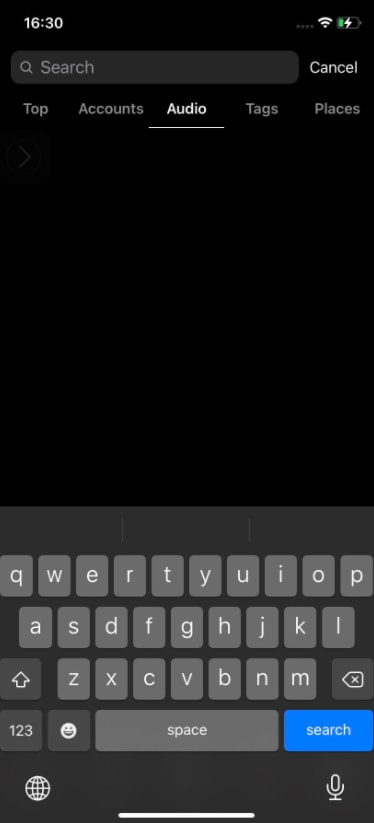
Step 2: Select Audio!
Next, select the audio reel that you want to download!
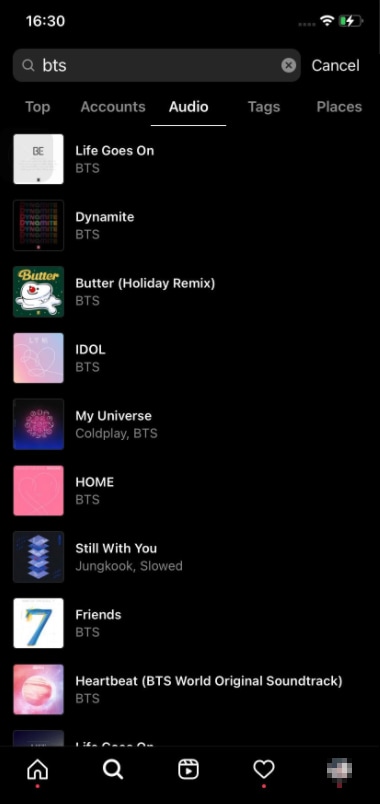
Step 3: Share Option!
Once you’ve arrived on the audio page of your chosen track, select the share settings at the top right corner of the screen (pointed out in the image below.)
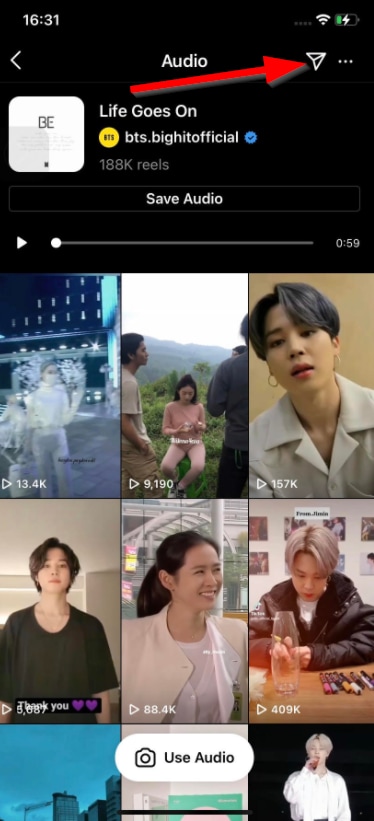
Step 4: Copy Link & Download!
At the bottom of the screen, you should now find an option to copy the direct URL link of the audio that you’ve chosen (as shown in the image below!)
Now, as mentioned in the previous section, all you need to do is take that link to an insta mp3 converter! The best of which we’ll be introducing in the next section.
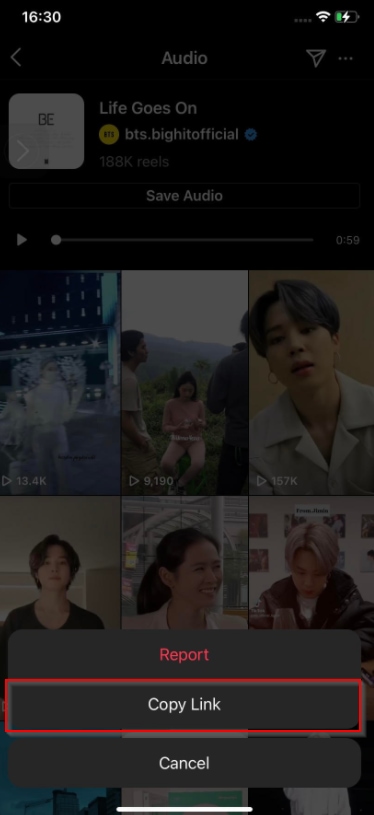
Part 2 The Best 6 Instagram to Mp3 Downloader Online
Now, for the promised list of Instagram Video Converter (MP3) tools! This list will be as comprehensive as we can manage it, including not only an introduction but also the pricing, features, and limitations of all the converters in question.
01INSTAGRAM VIDEO CONVERTER
Price: FREE
The Instagram Video Converter offered on the ‘Online Video Converter’ website is the first Insta MP3 converter on this list! It’s incredibly easy to use, and is free to boot! So, you can convert MP3 Instagram audio with no problem. Keep in mind, of course, that because this tool is free, it does come with its limits as well as general cons.
| Features | Limits |
|---|---|
| ● Online Insta MP3 Converter, no download needed! ● Online Insta MP3 Converter, no download needed! ● One-click download! | ● No quality controls. ● Usable only if you have an internet connection. ● Open-source software comes with potentially harmful ads. |
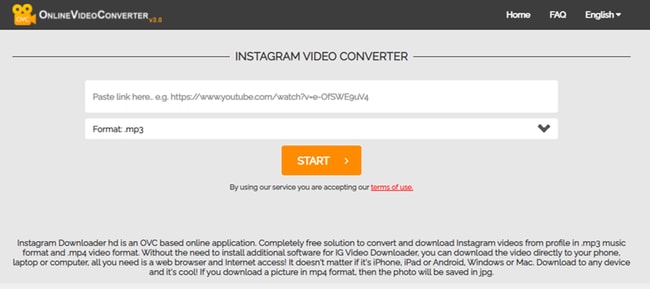
02Ace Thinker
Price: FREE
Our next Instagram Video Converter (MP3) is Ace Thinker. Just like the one from ‘Online Video Converter’ this is an online solution that you can use on any device (be it your smartphone or Windows/Mac computer). It’s also 100% free, so you can use it without having to worry about making any long-term commitments.
| Features | Limits |
|---|---|
| ● Online Instagram converter ● 1-click download ● Available file formats: .mp3 | ● Can only convert to MP3 ● Comes with potentially harmful ads. ● Can only be used when online. |
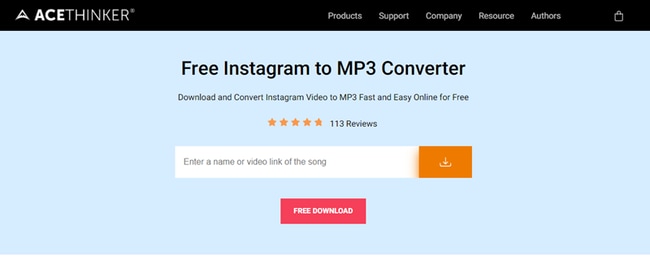
03Instasaved
Price: FREE
With our next pick, we spice it up with an Instagram-specific tool, called Instasave that you can use to download pretty much any kind of Instagram content that you want. That, of course, includes allowing you to convert MP3 Instagram posts! Note, however, this is not as well-known as other options out there, so use it mindfully!
| Features | Limits |
|---|---|
| ● Instagram content downloader ● Multiple file format converter ● Online video converter - no download or installation required. | ● Conversion tool only ● No quality control ● Can only be used when online |

04OffMP3
Price: Free
Next on our list is OFFMP3. It is, much like the other tools we’ve introduced thus far, an online video converter tool! This one, however, just like Intasaved, is a lot more obscure than the first two that we introduced. And thus, a little more limited.
| Features | Limits |
|---|---|
| ● Online video converter ● FREE-to-use ● Multiple video conversion format | ● For online use only ● Obscure site ● Comes with potentially harmful ads |
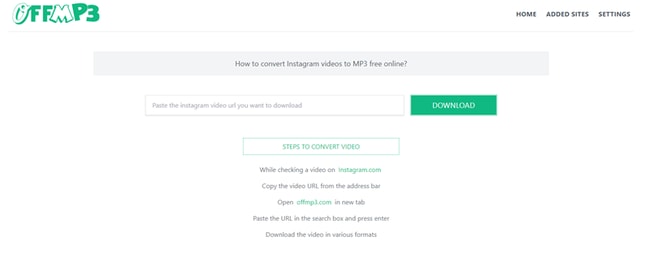
054ins
Price: FREE
Despite the name, 4in’s Instagram to MP4 converter does work for converting Instagram posts into MP3 files as well (as is shown in the image below). It’s not the most advanced converter tool out there. But it does work, and it requires no download or installation.
| Features | Limits |
|---|---|
| ● Free to use ● Online video converter, no download or installation needed ● Available conversion formats: .mp4 and .mp3 | ● For online use only ● Limited conversion formats ● No quality control |

06Wondershare Filmora
Price: Freemium!
You can try Wondershare Filmora Video Editor free today if you’re looking for something a little more reliable as your Instagram video to MP3 converter. Of course, that’s not all that it can do either! With Wondershare Filmora’s advanced features, the world is literally your oyster. Although, of course, if you want access to some of Filmora’s more advanced features, you’ll have to pay their subscription fee to gain access to Filmora Pro.
| Features | Limits |
|---|---|
| ● Advanced Video Editing tools for creating a top-of-the-line Instagram post ● High-quality video rendering ● High-quality video rendering | ● Limited FREE version ● Will require download and installation ● Subscription fees (annual and monthly) |
Wondershare Filmora
Get started easily with Filmora’s powerful performance, intuitive interface, and countless effects!
Try It Free Try It Free Try It Free Learn More >


Key Takeaways from This Episode
● Found a video on Instagram with audio that you really like? Well, then it’s easy enough to get your hand on it (so long as you don’t intend to make use of it nefariously, of course!)
● There are Instagram-to-MP3 converters that will allow you to literally convert your favorite Instagram videos into an MP3 in a single click (without having to ever even download or install anything!)
● Although, of course, if you’re looking for something more advanced than you’re average, online video converter tool, there are other more premium options that you can try out to step up your game.
It is perfectly possible to download Instagram MP3 files! All you need is an Instagram Video Converter (MP3)! The process for it is rather simple, actually.
And, if you’re using the right tool, completely for FREE! Stick around till the end to learn more and be introduced to some of the best tools to convert MP3 Instagram audio.
In this article
01 [Solutions on Downloading Instagram Mp3](#Part 1)
02 [The Best 6 Instagram to Mp3 Downloader Online](#Part 2)
Part 1 Solutions on Downloading Instagram Mp3
For now, let’s start with a general discussion on how you can download Instagram MP3 audio and videos. You may or may not know of this information already. If so, skip to the next portion, where we’ll be introducing 6 of the best Instagram Video Converter MP3 tools available in the market right now!
01How to Download Instagram Videos to Audio Mp3?
The easiest way to download Instagram MP3 from videos is to copy the direct URL link of the Instagram video in question and make use of an Instagram video converter (MP3). These converters are available both as software and online tools — so you have a wide variety of methods to choose from (which we’ll discuss more in the next part — where we introduce some of the best Instagram video converter (MP3).
02How to Download Instagram Reels Audio Only?
This one is a little more complicated — if you don’t know how to find the direct URL link for Instagram Reels, but the process is actually much of the same, as we’ll show you in the breakdown of the steps below:
Step 1: Search for Audio
The first step is to search for the audio that you’re looking to download. For this, make sure that you select ‘Audio’ on the Search options!

Step 2: Select Audio!
Next, select the audio reel that you want to download!

Step 3: Share Option!
Once you’ve arrived on the audio page of your chosen track, select the share settings at the top right corner of the screen (pointed out in the image below.)

Step 4: Copy Link & Download!
At the bottom of the screen, you should now find an option to copy the direct URL link of the audio that you’ve chosen (as shown in the image below!)
Now, as mentioned in the previous section, all you need to do is take that link to an insta mp3 converter! The best of which we’ll be introducing in the next section.

Part 2 The Best 6 Instagram to Mp3 Downloader Online
Now, for the promised list of Instagram Video Converter (MP3) tools! This list will be as comprehensive as we can manage it, including not only an introduction but also the pricing, features, and limitations of all the converters in question.
01INSTAGRAM VIDEO CONVERTER
Price: FREE
The Instagram Video Converter offered on the ‘Online Video Converter’ website is the first Insta MP3 converter on this list! It’s incredibly easy to use, and is free to boot! So, you can convert MP3 Instagram audio with no problem. Keep in mind, of course, that because this tool is free, it does come with its limits as well as general cons.
| Features | Limits |
|---|---|
| ● Online Insta MP3 Converter, no download needed! ● Online Insta MP3 Converter, no download needed! ● One-click download! | ● No quality controls. ● Usable only if you have an internet connection. ● Open-source software comes with potentially harmful ads. |

02Ace Thinker
Price: FREE
Our next Instagram Video Converter (MP3) is Ace Thinker. Just like the one from ‘Online Video Converter’ this is an online solution that you can use on any device (be it your smartphone or Windows/Mac computer). It’s also 100% free, so you can use it without having to worry about making any long-term commitments.
| Features | Limits |
|---|---|
| ● Online Instagram converter ● 1-click download ● Available file formats: .mp3 | ● Can only convert to MP3 ● Comes with potentially harmful ads. ● Can only be used when online. |

03Instasaved
Price: FREE
With our next pick, we spice it up with an Instagram-specific tool, called Instasave that you can use to download pretty much any kind of Instagram content that you want. That, of course, includes allowing you to convert MP3 Instagram posts! Note, however, this is not as well-known as other options out there, so use it mindfully!
| Features | Limits |
|---|---|
| ● Instagram content downloader ● Multiple file format converter ● Online video converter - no download or installation required. | ● Conversion tool only ● No quality control ● Can only be used when online |

04OffMP3
Price: Free
Next on our list is OFFMP3. It is, much like the other tools we’ve introduced thus far, an online video converter tool! This one, however, just like Intasaved, is a lot more obscure than the first two that we introduced. And thus, a little more limited.
| Features | Limits |
|---|---|
| ● Online video converter ● FREE-to-use ● Multiple video conversion format | ● For online use only ● Obscure site ● Comes with potentially harmful ads |

054ins
Price: FREE
Despite the name, 4in’s Instagram to MP4 converter does work for converting Instagram posts into MP3 files as well (as is shown in the image below). It’s not the most advanced converter tool out there. But it does work, and it requires no download or installation.
| Features | Limits |
|---|---|
| ● Free to use ● Online video converter, no download or installation needed ● Available conversion formats: .mp4 and .mp3 | ● For online use only ● Limited conversion formats ● No quality control |

06Wondershare Filmora
Price: Freemium!
You can try Wondershare Filmora Video Editor free today if you’re looking for something a little more reliable as your Instagram video to MP3 converter. Of course, that’s not all that it can do either! With Wondershare Filmora’s advanced features, the world is literally your oyster. Although, of course, if you want access to some of Filmora’s more advanced features, you’ll have to pay their subscription fee to gain access to Filmora Pro.
| Features | Limits |
|---|---|
| ● Advanced Video Editing tools for creating a top-of-the-line Instagram post ● High-quality video rendering ● High-quality video rendering | ● Limited FREE version ● Will require download and installation ● Subscription fees (annual and monthly) |
Wondershare Filmora
Get started easily with Filmora’s powerful performance, intuitive interface, and countless effects!
Try It Free Try It Free Try It Free Learn More >


Key Takeaways from This Episode
● Found a video on Instagram with audio that you really like? Well, then it’s easy enough to get your hand on it (so long as you don’t intend to make use of it nefariously, of course!)
● There are Instagram-to-MP3 converters that will allow you to literally convert your favorite Instagram videos into an MP3 in a single click (without having to ever even download or install anything!)
● Although, of course, if you’re looking for something more advanced than you’re average, online video converter tool, there are other more premium options that you can try out to step up your game.
It is perfectly possible to download Instagram MP3 files! All you need is an Instagram Video Converter (MP3)! The process for it is rather simple, actually.
And, if you’re using the right tool, completely for FREE! Stick around till the end to learn more and be introduced to some of the best tools to convert MP3 Instagram audio.
In this article
01 [Solutions on Downloading Instagram Mp3](#Part 1)
02 [The Best 6 Instagram to Mp3 Downloader Online](#Part 2)
Part 1 Solutions on Downloading Instagram Mp3
For now, let’s start with a general discussion on how you can download Instagram MP3 audio and videos. You may or may not know of this information already. If so, skip to the next portion, where we’ll be introducing 6 of the best Instagram Video Converter MP3 tools available in the market right now!
01How to Download Instagram Videos to Audio Mp3?
The easiest way to download Instagram MP3 from videos is to copy the direct URL link of the Instagram video in question and make use of an Instagram video converter (MP3). These converters are available both as software and online tools — so you have a wide variety of methods to choose from (which we’ll discuss more in the next part — where we introduce some of the best Instagram video converter (MP3).
02How to Download Instagram Reels Audio Only?
This one is a little more complicated — if you don’t know how to find the direct URL link for Instagram Reels, but the process is actually much of the same, as we’ll show you in the breakdown of the steps below:
Step 1: Search for Audio
The first step is to search for the audio that you’re looking to download. For this, make sure that you select ‘Audio’ on the Search options!

Step 2: Select Audio!
Next, select the audio reel that you want to download!

Step 3: Share Option!
Once you’ve arrived on the audio page of your chosen track, select the share settings at the top right corner of the screen (pointed out in the image below.)

Step 4: Copy Link & Download!
At the bottom of the screen, you should now find an option to copy the direct URL link of the audio that you’ve chosen (as shown in the image below!)
Now, as mentioned in the previous section, all you need to do is take that link to an insta mp3 converter! The best of which we’ll be introducing in the next section.

Part 2 The Best 6 Instagram to Mp3 Downloader Online
Now, for the promised list of Instagram Video Converter (MP3) tools! This list will be as comprehensive as we can manage it, including not only an introduction but also the pricing, features, and limitations of all the converters in question.
01INSTAGRAM VIDEO CONVERTER
Price: FREE
The Instagram Video Converter offered on the ‘Online Video Converter’ website is the first Insta MP3 converter on this list! It’s incredibly easy to use, and is free to boot! So, you can convert MP3 Instagram audio with no problem. Keep in mind, of course, that because this tool is free, it does come with its limits as well as general cons.
| Features | Limits |
|---|---|
| ● Online Insta MP3 Converter, no download needed! ● Online Insta MP3 Converter, no download needed! ● One-click download! | ● No quality controls. ● Usable only if you have an internet connection. ● Open-source software comes with potentially harmful ads. |

02Ace Thinker
Price: FREE
Our next Instagram Video Converter (MP3) is Ace Thinker. Just like the one from ‘Online Video Converter’ this is an online solution that you can use on any device (be it your smartphone or Windows/Mac computer). It’s also 100% free, so you can use it without having to worry about making any long-term commitments.
| Features | Limits |
|---|---|
| ● Online Instagram converter ● 1-click download ● Available file formats: .mp3 | ● Can only convert to MP3 ● Comes with potentially harmful ads. ● Can only be used when online. |

03Instasaved
Price: FREE
With our next pick, we spice it up with an Instagram-specific tool, called Instasave that you can use to download pretty much any kind of Instagram content that you want. That, of course, includes allowing you to convert MP3 Instagram posts! Note, however, this is not as well-known as other options out there, so use it mindfully!
| Features | Limits |
|---|---|
| ● Instagram content downloader ● Multiple file format converter ● Online video converter - no download or installation required. | ● Conversion tool only ● No quality control ● Can only be used when online |

04OffMP3
Price: Free
Next on our list is OFFMP3. It is, much like the other tools we’ve introduced thus far, an online video converter tool! This one, however, just like Intasaved, is a lot more obscure than the first two that we introduced. And thus, a little more limited.
| Features | Limits |
|---|---|
| ● Online video converter ● FREE-to-use ● Multiple video conversion format | ● For online use only ● Obscure site ● Comes with potentially harmful ads |

054ins
Price: FREE
Despite the name, 4in’s Instagram to MP4 converter does work for converting Instagram posts into MP3 files as well (as is shown in the image below). It’s not the most advanced converter tool out there. But it does work, and it requires no download or installation.
| Features | Limits |
|---|---|
| ● Free to use ● Online video converter, no download or installation needed ● Available conversion formats: .mp4 and .mp3 | ● For online use only ● Limited conversion formats ● No quality control |

06Wondershare Filmora
Price: Freemium!
You can try Wondershare Filmora Video Editor free today if you’re looking for something a little more reliable as your Instagram video to MP3 converter. Of course, that’s not all that it can do either! With Wondershare Filmora’s advanced features, the world is literally your oyster. Although, of course, if you want access to some of Filmora’s more advanced features, you’ll have to pay their subscription fee to gain access to Filmora Pro.
| Features | Limits |
|---|---|
| ● Advanced Video Editing tools for creating a top-of-the-line Instagram post ● High-quality video rendering ● High-quality video rendering | ● Limited FREE version ● Will require download and installation ● Subscription fees (annual and monthly) |
Wondershare Filmora
Get started easily with Filmora’s powerful performance, intuitive interface, and countless effects!
Try It Free Try It Free Try It Free Learn More >


Key Takeaways from This Episode
● Found a video on Instagram with audio that you really like? Well, then it’s easy enough to get your hand on it (so long as you don’t intend to make use of it nefariously, of course!)
● There are Instagram-to-MP3 converters that will allow you to literally convert your favorite Instagram videos into an MP3 in a single click (without having to ever even download or install anything!)
● Although, of course, if you’re looking for something more advanced than you’re average, online video converter tool, there are other more premium options that you can try out to step up your game.
It is perfectly possible to download Instagram MP3 files! All you need is an Instagram Video Converter (MP3)! The process for it is rather simple, actually.
And, if you’re using the right tool, completely for FREE! Stick around till the end to learn more and be introduced to some of the best tools to convert MP3 Instagram audio.
In this article
01 [Solutions on Downloading Instagram Mp3](#Part 1)
02 [The Best 6 Instagram to Mp3 Downloader Online](#Part 2)
Part 1 Solutions on Downloading Instagram Mp3
For now, let’s start with a general discussion on how you can download Instagram MP3 audio and videos. You may or may not know of this information already. If so, skip to the next portion, where we’ll be introducing 6 of the best Instagram Video Converter MP3 tools available in the market right now!
01How to Download Instagram Videos to Audio Mp3?
The easiest way to download Instagram MP3 from videos is to copy the direct URL link of the Instagram video in question and make use of an Instagram video converter (MP3). These converters are available both as software and online tools — so you have a wide variety of methods to choose from (which we’ll discuss more in the next part — where we introduce some of the best Instagram video converter (MP3).
02How to Download Instagram Reels Audio Only?
This one is a little more complicated — if you don’t know how to find the direct URL link for Instagram Reels, but the process is actually much of the same, as we’ll show you in the breakdown of the steps below:
Step 1: Search for Audio
The first step is to search for the audio that you’re looking to download. For this, make sure that you select ‘Audio’ on the Search options!

Step 2: Select Audio!
Next, select the audio reel that you want to download!

Step 3: Share Option!
Once you’ve arrived on the audio page of your chosen track, select the share settings at the top right corner of the screen (pointed out in the image below.)

Step 4: Copy Link & Download!
At the bottom of the screen, you should now find an option to copy the direct URL link of the audio that you’ve chosen (as shown in the image below!)
Now, as mentioned in the previous section, all you need to do is take that link to an insta mp3 converter! The best of which we’ll be introducing in the next section.

Part 2 The Best 6 Instagram to Mp3 Downloader Online
Now, for the promised list of Instagram Video Converter (MP3) tools! This list will be as comprehensive as we can manage it, including not only an introduction but also the pricing, features, and limitations of all the converters in question.
01INSTAGRAM VIDEO CONVERTER
Price: FREE
The Instagram Video Converter offered on the ‘Online Video Converter’ website is the first Insta MP3 converter on this list! It’s incredibly easy to use, and is free to boot! So, you can convert MP3 Instagram audio with no problem. Keep in mind, of course, that because this tool is free, it does come with its limits as well as general cons.
| Features | Limits |
|---|---|
| ● Online Insta MP3 Converter, no download needed! ● Online Insta MP3 Converter, no download needed! ● One-click download! | ● No quality controls. ● Usable only if you have an internet connection. ● Open-source software comes with potentially harmful ads. |

02Ace Thinker
Price: FREE
Our next Instagram Video Converter (MP3) is Ace Thinker. Just like the one from ‘Online Video Converter’ this is an online solution that you can use on any device (be it your smartphone or Windows/Mac computer). It’s also 100% free, so you can use it without having to worry about making any long-term commitments.
| Features | Limits |
|---|---|
| ● Online Instagram converter ● 1-click download ● Available file formats: .mp3 | ● Can only convert to MP3 ● Comes with potentially harmful ads. ● Can only be used when online. |

03Instasaved
Price: FREE
With our next pick, we spice it up with an Instagram-specific tool, called Instasave that you can use to download pretty much any kind of Instagram content that you want. That, of course, includes allowing you to convert MP3 Instagram posts! Note, however, this is not as well-known as other options out there, so use it mindfully!
| Features | Limits |
|---|---|
| ● Instagram content downloader ● Multiple file format converter ● Online video converter - no download or installation required. | ● Conversion tool only ● No quality control ● Can only be used when online |

04OffMP3
Price: Free
Next on our list is OFFMP3. It is, much like the other tools we’ve introduced thus far, an online video converter tool! This one, however, just like Intasaved, is a lot more obscure than the first two that we introduced. And thus, a little more limited.
| Features | Limits |
|---|---|
| ● Online video converter ● FREE-to-use ● Multiple video conversion format | ● For online use only ● Obscure site ● Comes with potentially harmful ads |

054ins
Price: FREE
Despite the name, 4in’s Instagram to MP4 converter does work for converting Instagram posts into MP3 files as well (as is shown in the image below). It’s not the most advanced converter tool out there. But it does work, and it requires no download or installation.
| Features | Limits |
|---|---|
| ● Free to use ● Online video converter, no download or installation needed ● Available conversion formats: .mp4 and .mp3 | ● For online use only ● Limited conversion formats ● No quality control |

06Wondershare Filmora
Price: Freemium!
You can try Wondershare Filmora Video Editor free today if you’re looking for something a little more reliable as your Instagram video to MP3 converter. Of course, that’s not all that it can do either! With Wondershare Filmora’s advanced features, the world is literally your oyster. Although, of course, if you want access to some of Filmora’s more advanced features, you’ll have to pay their subscription fee to gain access to Filmora Pro.
| Features | Limits |
|---|---|
| ● Advanced Video Editing tools for creating a top-of-the-line Instagram post ● High-quality video rendering ● High-quality video rendering | ● Limited FREE version ● Will require download and installation ● Subscription fees (annual and monthly) |
Wondershare Filmora
Get started easily with Filmora’s powerful performance, intuitive interface, and countless effects!
Try It Free Try It Free Try It Free Learn More >


Key Takeaways from This Episode
● Found a video on Instagram with audio that you really like? Well, then it’s easy enough to get your hand on it (so long as you don’t intend to make use of it nefariously, of course!)
● There are Instagram-to-MP3 converters that will allow you to literally convert your favorite Instagram videos into an MP3 in a single click (without having to ever even download or install anything!)
● Although, of course, if you’re looking for something more advanced than you’re average, online video converter tool, there are other more premium options that you can try out to step up your game.
Final Cut Pro X: Creating Stunning Titles for Your Videos
How to Add Titles in Final Cut Pro X

Benjamin Arango
Mar 27, 2024• Proven solutions
We add text titles to our projects to tell the audience something they can’t figure out on their own, such as the title of our program, the name of the person speaking, or technical details about a subject.
This is a basic tutorial about Apple Final Cut Pro X, professional video editing software. However, if video editing is new to you, consider Wondershare Filmora for Mac . This is a powerful but easy-to-use tool for users just starting out. Download the free trial version below.
 Download Mac Version ](https://tools.techidaily.com/wondershare/filmora/download/ )
Download Mac Version ](https://tools.techidaily.com/wondershare/filmora/download/ )
Final Cut Pro X has almost 200 different text effects that we can add, but the process of adding titles is essentially the same. Adding titles is what this article is about.
DEFINITIONS
Just to keep us all on the same page, here are my definitions of key terms related to text:
- Text or titles. Words placed on the screen. I use these terms interchangeably.
- Superimpose. Text displayed on the the screen with other video below it. These are also called “supers” or “keys.”
- Full-screen. Text which occupies the entire screen.
- Lower-third. Text which fits below a person talking; in the “lower-third” of the screen.
- Info-graphics. Full-screen text which is superimposed on a graphic, generally used to convey technical information. Typical uses are sports statistics or other information which is easier to convey using text than having someone read the words.
JUST THE BASICS

I’d like to introduce “Yertle,” he’s a sea turtle and the star of this article. (Footage courtesy of Jim Walker and Lobsters Gone Wild Productions.)
At its simplest, we use titles to display his (its?) name.

In the Timeline, put the playhead where you want a title to appear and type Shift+Control+T. This inserts the default lower-third title at the position of the playhead. The title, like almost all titles, has a default duration of 10:00 seconds.

Look at the Browser and see the results of your work. A lower-third title is superimposed over the video in the lower left corner. (I’ll talk about formatting the text in a few paragraphs.)
NOTE: The big limitation of this lower-third title is that it can only be positioned in the left corner. Moving it to the center or right corner requires manual adjustment.
You position or trim a title the same as any video clip: drag the clip to a different location, or drag an edge to change its duration.
Select that title and delete it by pressing the Delete key.

This time, type Control+T and the default full-screen title appears in the center of the screen. Again, this has a default duration of 10 seconds.

If you look right in the center of the screen, you’ll see the word “Title.” Yes, its darn near invisible. And, yes, it looks, um, ugly. However, we have a TON of formatting control to make this look however we want.
Select and delete that full-screen title.
There’s one more way to apply a title: dragging from the Titles Browser.

Click the Title icon in the Toolbar. This displays the contents of the Title Browser. The column on the left displays title categories, the icons on the right indicate individual titles, the search box at the bottom allows you to search for specific titles by name, while the number in the lower right indicates the number of titles currently displayed. (Your number may not match mine because I’ve added a few custom titles to my system.)

Let’s add a totally ridiculous title to our turtle - drag Clouds from the Title Browser and place it above the clip at the point where you want a title to appear.
NOTE: I’m using a marker in the Timeline to help me find the same place in a clip so my screen shots are consistent. Markers are not needed in any way for titles.

Um, yeah. So, some titles look more professional than others… You can delete this title now.
So, we:
- Add titles using keyboard shortcuts
- Drag titles from the Title Browser
- Change position by dragging the title
- Change duration by dragging the edge of the clip
- Delete a title by selecting it and pressing the Delete key
CHANGING TEXT

Add a new full-screen title (type Control+T) to the Timeline. To change the text in a title, double-click it in the Viewer. Here, I’ve changed my title to “An Undersea Adventure.”
NOTE: We can also change the text using the Inspector. I’ll show you how in a few paragraphs. Pick whichever method is easiest for you.
All text, in any title, can be changed by double-clicking it in the Viewer to select it, then typing the new text you want to use.
FORMATTING TEXT

You can format any text that you can select. This means that you can format entire phrases, words, or individual letters differently. For this article, I will format everything the same, because once you know how this works, you can experiment on your own.
Here, I selected my entire title and opened the Inspector (shortcut Cmd+4). Click the Text tab at the top. This section of the Inspector allows you to format the text.
NOTE: The text box near the top of the panel is the second place you can select text for formatting.

If you want a fast way to format text, click the word “Normal” at the top. This displays a menu filled with different text formats. Some of these formats look pretty dreadful; the rest look worse.
NOTE: You can create your own text styles. Refer to the Help for information on how.

The Basic section of the Inspector allows you to change fonts, size, alignment… all the standard font settings we see in other programs. Here, I’ve changed the font to Hobo Std, at 167 points.
While many of these settings you already know there are a few you may not:
- Line spacing. Adjusts the vertical distance between lines within the same paragraph.
- Tracking. Adjusts the horizontal spacing between letters.
- Baseline. Adjusts the vertical spacing of text compared to the horizontal line running thru the center of the white circle in the Viewer.

The Face section allows us to change font color, opacity and blue. Outline and Glow allows us to add, not surprisingly, outlines and glows. You can adjust these as you see fit - I tend not to add outlines or glows.

However, I STRONGLY recommend adding drop shadows to all text that you want viewers to read. Video, even HD video, is low resolution compared to print. Drop shadows make your text much easier to read. These are the settings I recommend for drop shadows.

After making a few changes in the Inspector, here’s the final result. Very cool - and very different from where we started!
ACTION SAFE/TITLE SAFE ZONES
Since television was first invented, we needed to compensate for the differences in TV sets by designing graphics to stay within Action Safe and Title Safe boundaries.
While much of today’s video is designed for the web, your titles will look the best if you follow the same guidelines.
Titles015

Go to the Switch in the Viewer and select “Show Action Safe/Title Safe Zones.”

This displays two pale rectangles in the frame. The outer rectangle is called “Action Safe,” the inner one is called “Title Safe.” Action Safe is 5% in from all edges; Title Safe is 10% in from all edges.
When designing text and graphics for the web, keep all essential elements inside the outer rectangle. When designing graphics and text for broadcast or cable, keep all essential elements inside the inner rectangle.
Here, for example, notice that my title is fully contained within Action Safe.
SUMMARY
Titles give our programs character and personality, plus they explain what’s going on to the audience. Final Cut Pro X provides a wealth of formatting options to make our text look great.

Benjamin Arango
Benjamin Arango is a writer and a lover of all things video.
Follow @Benjamin Arango
Benjamin Arango
Mar 27, 2024• Proven solutions
We add text titles to our projects to tell the audience something they can’t figure out on their own, such as the title of our program, the name of the person speaking, or technical details about a subject.
This is a basic tutorial about Apple Final Cut Pro X, professional video editing software. However, if video editing is new to you, consider Wondershare Filmora for Mac . This is a powerful but easy-to-use tool for users just starting out. Download the free trial version below.
 Download Mac Version ](https://tools.techidaily.com/wondershare/filmora/download/ )
Download Mac Version ](https://tools.techidaily.com/wondershare/filmora/download/ )
Final Cut Pro X has almost 200 different text effects that we can add, but the process of adding titles is essentially the same. Adding titles is what this article is about.
DEFINITIONS
Just to keep us all on the same page, here are my definitions of key terms related to text:
- Text or titles. Words placed on the screen. I use these terms interchangeably.
- Superimpose. Text displayed on the the screen with other video below it. These are also called “supers” or “keys.”
- Full-screen. Text which occupies the entire screen.
- Lower-third. Text which fits below a person talking; in the “lower-third” of the screen.
- Info-graphics. Full-screen text which is superimposed on a graphic, generally used to convey technical information. Typical uses are sports statistics or other information which is easier to convey using text than having someone read the words.
JUST THE BASICS

I’d like to introduce “Yertle,” he’s a sea turtle and the star of this article. (Footage courtesy of Jim Walker and Lobsters Gone Wild Productions.)
At its simplest, we use titles to display his (its?) name.

In the Timeline, put the playhead where you want a title to appear and type Shift+Control+T. This inserts the default lower-third title at the position of the playhead. The title, like almost all titles, has a default duration of 10:00 seconds.

Look at the Browser and see the results of your work. A lower-third title is superimposed over the video in the lower left corner. (I’ll talk about formatting the text in a few paragraphs.)
NOTE: The big limitation of this lower-third title is that it can only be positioned in the left corner. Moving it to the center or right corner requires manual adjustment.
You position or trim a title the same as any video clip: drag the clip to a different location, or drag an edge to change its duration.
Select that title and delete it by pressing the Delete key.

This time, type Control+T and the default full-screen title appears in the center of the screen. Again, this has a default duration of 10 seconds.

If you look right in the center of the screen, you’ll see the word “Title.” Yes, its darn near invisible. And, yes, it looks, um, ugly. However, we have a TON of formatting control to make this look however we want.
Select and delete that full-screen title.
There’s one more way to apply a title: dragging from the Titles Browser.

Click the Title icon in the Toolbar. This displays the contents of the Title Browser. The column on the left displays title categories, the icons on the right indicate individual titles, the search box at the bottom allows you to search for specific titles by name, while the number in the lower right indicates the number of titles currently displayed. (Your number may not match mine because I’ve added a few custom titles to my system.)

Let’s add a totally ridiculous title to our turtle - drag Clouds from the Title Browser and place it above the clip at the point where you want a title to appear.
NOTE: I’m using a marker in the Timeline to help me find the same place in a clip so my screen shots are consistent. Markers are not needed in any way for titles.

Um, yeah. So, some titles look more professional than others… You can delete this title now.
So, we:
- Add titles using keyboard shortcuts
- Drag titles from the Title Browser
- Change position by dragging the title
- Change duration by dragging the edge of the clip
- Delete a title by selecting it and pressing the Delete key
CHANGING TEXT

Add a new full-screen title (type Control+T) to the Timeline. To change the text in a title, double-click it in the Viewer. Here, I’ve changed my title to “An Undersea Adventure.”
NOTE: We can also change the text using the Inspector. I’ll show you how in a few paragraphs. Pick whichever method is easiest for you.
All text, in any title, can be changed by double-clicking it in the Viewer to select it, then typing the new text you want to use.
FORMATTING TEXT

You can format any text that you can select. This means that you can format entire phrases, words, or individual letters differently. For this article, I will format everything the same, because once you know how this works, you can experiment on your own.
Here, I selected my entire title and opened the Inspector (shortcut Cmd+4). Click the Text tab at the top. This section of the Inspector allows you to format the text.
NOTE: The text box near the top of the panel is the second place you can select text for formatting.

If you want a fast way to format text, click the word “Normal” at the top. This displays a menu filled with different text formats. Some of these formats look pretty dreadful; the rest look worse.
NOTE: You can create your own text styles. Refer to the Help for information on how.

The Basic section of the Inspector allows you to change fonts, size, alignment… all the standard font settings we see in other programs. Here, I’ve changed the font to Hobo Std, at 167 points.
While many of these settings you already know there are a few you may not:
- Line spacing. Adjusts the vertical distance between lines within the same paragraph.
- Tracking. Adjusts the horizontal spacing between letters.
- Baseline. Adjusts the vertical spacing of text compared to the horizontal line running thru the center of the white circle in the Viewer.

The Face section allows us to change font color, opacity and blue. Outline and Glow allows us to add, not surprisingly, outlines and glows. You can adjust these as you see fit - I tend not to add outlines or glows.

However, I STRONGLY recommend adding drop shadows to all text that you want viewers to read. Video, even HD video, is low resolution compared to print. Drop shadows make your text much easier to read. These are the settings I recommend for drop shadows.

After making a few changes in the Inspector, here’s the final result. Very cool - and very different from where we started!
ACTION SAFE/TITLE SAFE ZONES
Since television was first invented, we needed to compensate for the differences in TV sets by designing graphics to stay within Action Safe and Title Safe boundaries.
While much of today’s video is designed for the web, your titles will look the best if you follow the same guidelines.
Titles015

Go to the Switch in the Viewer and select “Show Action Safe/Title Safe Zones.”

This displays two pale rectangles in the frame. The outer rectangle is called “Action Safe,” the inner one is called “Title Safe.” Action Safe is 5% in from all edges; Title Safe is 10% in from all edges.
When designing text and graphics for the web, keep all essential elements inside the outer rectangle. When designing graphics and text for broadcast or cable, keep all essential elements inside the inner rectangle.
Here, for example, notice that my title is fully contained within Action Safe.
SUMMARY
Titles give our programs character and personality, plus they explain what’s going on to the audience. Final Cut Pro X provides a wealth of formatting options to make our text look great.

Benjamin Arango
Benjamin Arango is a writer and a lover of all things video.
Follow @Benjamin Arango
Benjamin Arango
Mar 27, 2024• Proven solutions
We add text titles to our projects to tell the audience something they can’t figure out on their own, such as the title of our program, the name of the person speaking, or technical details about a subject.
This is a basic tutorial about Apple Final Cut Pro X, professional video editing software. However, if video editing is new to you, consider Wondershare Filmora for Mac . This is a powerful but easy-to-use tool for users just starting out. Download the free trial version below.
 Download Mac Version ](https://tools.techidaily.com/wondershare/filmora/download/ )
Download Mac Version ](https://tools.techidaily.com/wondershare/filmora/download/ )
Final Cut Pro X has almost 200 different text effects that we can add, but the process of adding titles is essentially the same. Adding titles is what this article is about.
DEFINITIONS
Just to keep us all on the same page, here are my definitions of key terms related to text:
- Text or titles. Words placed on the screen. I use these terms interchangeably.
- Superimpose. Text displayed on the the screen with other video below it. These are also called “supers” or “keys.”
- Full-screen. Text which occupies the entire screen.
- Lower-third. Text which fits below a person talking; in the “lower-third” of the screen.
- Info-graphics. Full-screen text which is superimposed on a graphic, generally used to convey technical information. Typical uses are sports statistics or other information which is easier to convey using text than having someone read the words.
JUST THE BASICS

I’d like to introduce “Yertle,” he’s a sea turtle and the star of this article. (Footage courtesy of Jim Walker and Lobsters Gone Wild Productions.)
At its simplest, we use titles to display his (its?) name.

In the Timeline, put the playhead where you want a title to appear and type Shift+Control+T. This inserts the default lower-third title at the position of the playhead. The title, like almost all titles, has a default duration of 10:00 seconds.

Look at the Browser and see the results of your work. A lower-third title is superimposed over the video in the lower left corner. (I’ll talk about formatting the text in a few paragraphs.)
NOTE: The big limitation of this lower-third title is that it can only be positioned in the left corner. Moving it to the center or right corner requires manual adjustment.
You position or trim a title the same as any video clip: drag the clip to a different location, or drag an edge to change its duration.
Select that title and delete it by pressing the Delete key.

This time, type Control+T and the default full-screen title appears in the center of the screen. Again, this has a default duration of 10 seconds.

If you look right in the center of the screen, you’ll see the word “Title.” Yes, its darn near invisible. And, yes, it looks, um, ugly. However, we have a TON of formatting control to make this look however we want.
Select and delete that full-screen title.
There’s one more way to apply a title: dragging from the Titles Browser.

Click the Title icon in the Toolbar. This displays the contents of the Title Browser. The column on the left displays title categories, the icons on the right indicate individual titles, the search box at the bottom allows you to search for specific titles by name, while the number in the lower right indicates the number of titles currently displayed. (Your number may not match mine because I’ve added a few custom titles to my system.)

Let’s add a totally ridiculous title to our turtle - drag Clouds from the Title Browser and place it above the clip at the point where you want a title to appear.
NOTE: I’m using a marker in the Timeline to help me find the same place in a clip so my screen shots are consistent. Markers are not needed in any way for titles.

Um, yeah. So, some titles look more professional than others… You can delete this title now.
So, we:
- Add titles using keyboard shortcuts
- Drag titles from the Title Browser
- Change position by dragging the title
- Change duration by dragging the edge of the clip
- Delete a title by selecting it and pressing the Delete key
CHANGING TEXT

Add a new full-screen title (type Control+T) to the Timeline. To change the text in a title, double-click it in the Viewer. Here, I’ve changed my title to “An Undersea Adventure.”
NOTE: We can also change the text using the Inspector. I’ll show you how in a few paragraphs. Pick whichever method is easiest for you.
All text, in any title, can be changed by double-clicking it in the Viewer to select it, then typing the new text you want to use.
FORMATTING TEXT

You can format any text that you can select. This means that you can format entire phrases, words, or individual letters differently. For this article, I will format everything the same, because once you know how this works, you can experiment on your own.
Here, I selected my entire title and opened the Inspector (shortcut Cmd+4). Click the Text tab at the top. This section of the Inspector allows you to format the text.
NOTE: The text box near the top of the panel is the second place you can select text for formatting.

If you want a fast way to format text, click the word “Normal” at the top. This displays a menu filled with different text formats. Some of these formats look pretty dreadful; the rest look worse.
NOTE: You can create your own text styles. Refer to the Help for information on how.

The Basic section of the Inspector allows you to change fonts, size, alignment… all the standard font settings we see in other programs. Here, I’ve changed the font to Hobo Std, at 167 points.
While many of these settings you already know there are a few you may not:
- Line spacing. Adjusts the vertical distance between lines within the same paragraph.
- Tracking. Adjusts the horizontal spacing between letters.
- Baseline. Adjusts the vertical spacing of text compared to the horizontal line running thru the center of the white circle in the Viewer.

The Face section allows us to change font color, opacity and blue. Outline and Glow allows us to add, not surprisingly, outlines and glows. You can adjust these as you see fit - I tend not to add outlines or glows.

However, I STRONGLY recommend adding drop shadows to all text that you want viewers to read. Video, even HD video, is low resolution compared to print. Drop shadows make your text much easier to read. These are the settings I recommend for drop shadows.

After making a few changes in the Inspector, here’s the final result. Very cool - and very different from where we started!
ACTION SAFE/TITLE SAFE ZONES
Since television was first invented, we needed to compensate for the differences in TV sets by designing graphics to stay within Action Safe and Title Safe boundaries.
While much of today’s video is designed for the web, your titles will look the best if you follow the same guidelines.
Titles015

Go to the Switch in the Viewer and select “Show Action Safe/Title Safe Zones.”

This displays two pale rectangles in the frame. The outer rectangle is called “Action Safe,” the inner one is called “Title Safe.” Action Safe is 5% in from all edges; Title Safe is 10% in from all edges.
When designing text and graphics for the web, keep all essential elements inside the outer rectangle. When designing graphics and text for broadcast or cable, keep all essential elements inside the inner rectangle.
Here, for example, notice that my title is fully contained within Action Safe.
SUMMARY
Titles give our programs character and personality, plus they explain what’s going on to the audience. Final Cut Pro X provides a wealth of formatting options to make our text look great.

Benjamin Arango
Benjamin Arango is a writer and a lover of all things video.
Follow @Benjamin Arango
Benjamin Arango
Mar 27, 2024• Proven solutions
We add text titles to our projects to tell the audience something they can’t figure out on their own, such as the title of our program, the name of the person speaking, or technical details about a subject.
This is a basic tutorial about Apple Final Cut Pro X, professional video editing software. However, if video editing is new to you, consider Wondershare Filmora for Mac . This is a powerful but easy-to-use tool for users just starting out. Download the free trial version below.
 Download Mac Version ](https://tools.techidaily.com/wondershare/filmora/download/ )
Download Mac Version ](https://tools.techidaily.com/wondershare/filmora/download/ )
Final Cut Pro X has almost 200 different text effects that we can add, but the process of adding titles is essentially the same. Adding titles is what this article is about.
DEFINITIONS
Just to keep us all on the same page, here are my definitions of key terms related to text:
- Text or titles. Words placed on the screen. I use these terms interchangeably.
- Superimpose. Text displayed on the the screen with other video below it. These are also called “supers” or “keys.”
- Full-screen. Text which occupies the entire screen.
- Lower-third. Text which fits below a person talking; in the “lower-third” of the screen.
- Info-graphics. Full-screen text which is superimposed on a graphic, generally used to convey technical information. Typical uses are sports statistics or other information which is easier to convey using text than having someone read the words.
JUST THE BASICS

I’d like to introduce “Yertle,” he’s a sea turtle and the star of this article. (Footage courtesy of Jim Walker and Lobsters Gone Wild Productions.)
At its simplest, we use titles to display his (its?) name.

In the Timeline, put the playhead where you want a title to appear and type Shift+Control+T. This inserts the default lower-third title at the position of the playhead. The title, like almost all titles, has a default duration of 10:00 seconds.

Look at the Browser and see the results of your work. A lower-third title is superimposed over the video in the lower left corner. (I’ll talk about formatting the text in a few paragraphs.)
NOTE: The big limitation of this lower-third title is that it can only be positioned in the left corner. Moving it to the center or right corner requires manual adjustment.
You position or trim a title the same as any video clip: drag the clip to a different location, or drag an edge to change its duration.
Select that title and delete it by pressing the Delete key.

This time, type Control+T and the default full-screen title appears in the center of the screen. Again, this has a default duration of 10 seconds.

If you look right in the center of the screen, you’ll see the word “Title.” Yes, its darn near invisible. And, yes, it looks, um, ugly. However, we have a TON of formatting control to make this look however we want.
Select and delete that full-screen title.
There’s one more way to apply a title: dragging from the Titles Browser.

Click the Title icon in the Toolbar. This displays the contents of the Title Browser. The column on the left displays title categories, the icons on the right indicate individual titles, the search box at the bottom allows you to search for specific titles by name, while the number in the lower right indicates the number of titles currently displayed. (Your number may not match mine because I’ve added a few custom titles to my system.)

Let’s add a totally ridiculous title to our turtle - drag Clouds from the Title Browser and place it above the clip at the point where you want a title to appear.
NOTE: I’m using a marker in the Timeline to help me find the same place in a clip so my screen shots are consistent. Markers are not needed in any way for titles.

Um, yeah. So, some titles look more professional than others… You can delete this title now.
So, we:
- Add titles using keyboard shortcuts
- Drag titles from the Title Browser
- Change position by dragging the title
- Change duration by dragging the edge of the clip
- Delete a title by selecting it and pressing the Delete key
CHANGING TEXT

Add a new full-screen title (type Control+T) to the Timeline. To change the text in a title, double-click it in the Viewer. Here, I’ve changed my title to “An Undersea Adventure.”
NOTE: We can also change the text using the Inspector. I’ll show you how in a few paragraphs. Pick whichever method is easiest for you.
All text, in any title, can be changed by double-clicking it in the Viewer to select it, then typing the new text you want to use.
FORMATTING TEXT

You can format any text that you can select. This means that you can format entire phrases, words, or individual letters differently. For this article, I will format everything the same, because once you know how this works, you can experiment on your own.
Here, I selected my entire title and opened the Inspector (shortcut Cmd+4). Click the Text tab at the top. This section of the Inspector allows you to format the text.
NOTE: The text box near the top of the panel is the second place you can select text for formatting.

If you want a fast way to format text, click the word “Normal” at the top. This displays a menu filled with different text formats. Some of these formats look pretty dreadful; the rest look worse.
NOTE: You can create your own text styles. Refer to the Help for information on how.

The Basic section of the Inspector allows you to change fonts, size, alignment… all the standard font settings we see in other programs. Here, I’ve changed the font to Hobo Std, at 167 points.
While many of these settings you already know there are a few you may not:
- Line spacing. Adjusts the vertical distance between lines within the same paragraph.
- Tracking. Adjusts the horizontal spacing between letters.
- Baseline. Adjusts the vertical spacing of text compared to the horizontal line running thru the center of the white circle in the Viewer.

The Face section allows us to change font color, opacity and blue. Outline and Glow allows us to add, not surprisingly, outlines and glows. You can adjust these as you see fit - I tend not to add outlines or glows.

However, I STRONGLY recommend adding drop shadows to all text that you want viewers to read. Video, even HD video, is low resolution compared to print. Drop shadows make your text much easier to read. These are the settings I recommend for drop shadows.

After making a few changes in the Inspector, here’s the final result. Very cool - and very different from where we started!
ACTION SAFE/TITLE SAFE ZONES
Since television was first invented, we needed to compensate for the differences in TV sets by designing graphics to stay within Action Safe and Title Safe boundaries.
While much of today’s video is designed for the web, your titles will look the best if you follow the same guidelines.
Titles015

Go to the Switch in the Viewer and select “Show Action Safe/Title Safe Zones.”

This displays two pale rectangles in the frame. The outer rectangle is called “Action Safe,” the inner one is called “Title Safe.” Action Safe is 5% in from all edges; Title Safe is 10% in from all edges.
When designing text and graphics for the web, keep all essential elements inside the outer rectangle. When designing graphics and text for broadcast or cable, keep all essential elements inside the inner rectangle.
Here, for example, notice that my title is fully contained within Action Safe.
SUMMARY
Titles give our programs character and personality, plus they explain what’s going on to the audience. Final Cut Pro X provides a wealth of formatting options to make our text look great.

Benjamin Arango
Benjamin Arango is a writer and a lover of all things video.
Follow @Benjamin Arango
Also read:
- New MP3 to MP4 Conversion Checklist Dont Forget These Crucial Steps for 2024
- Split Your Screen, Double the Fun Top Video Apps for Mobile
- In 2024, Download YouTube Audio Like a Pro Expert Tips and Tricks
- Updated In 2024, Premiere Pro Tutorial Taming the Shake - Video Stabilization Tips
- 2024 Approved Top 10 Slow Motion Video Editing Software
- New The Ultimate List of Linux Video Editing Software (No Adobe Required) for 2024
- New In 2024, Cutting-Edge MKV Trimmers for Mac Top 3 Reviews
- 2024 Approved Motion Mastery Essential Apps for Tracking Your Movements
- New In 2024, How to Choose the Best YouTube to MP3 Converter Insider Tips
- New 2024 Approved The Stop Motion Starter Kit Essential Software, Tips, and Tricks
- Updated Premiere Rush Too Expensive? Check Out These 4 Affordable Alternatives for 2024
- Updated The One-Stop Shop for Facebook Video Aspect Ratios A Beginners Guide
- New In 2024, Speeding Up or Slowing Down Footage in Camtasia Made Easy
- Updated The Art of Cartooning Top Apps to Turn Yourself Into a Cartoon
- New In 2024, Top Video Smoothing Apps
- Updated Edit MOV Files for Free Top 10 Video Editors
- New 2024 Approved Beginners Guide Best Free Video Cutting and Joining Software
- Updated In 2024, The Art of Storytelling Video Editing Tips to Bring Your Home Movies to Life
- In 2024, Mac Video Editing Made Easy with MKVtoolnix Software
- New The Ultimate AVI Editor for Windows 8 Effortless Video Editing Experience - 2023 for 2024
- New to Video Editing? Here Are the Best Free Tools Desktop/Online/Mobile
- Updated Refine Your Footage How to Stabilize Videos Like a Pro in AE for 2024
- Updated 2024 Approved Elevate Your Story 5 Top Movie Intro Software for Unique Openers
- How To Remove or Bypass Knox Enrollment Service On Realme Note 50
- In 2024, Pokemon Go No GPS Signal? Heres Every Possible Solution On Google Pixel 7a | Dr.fone
- Spoofing Life360 How to Do it on Infinix Smart 8 HD? | Dr.fone
- Updated 2024 Approved Unleash Creative Freedom Best Public Domain Video Resources
- 8 Safe and Effective Methods to Unlock Your iPhone 13 Without a Passcode | Dr.fone
- The Magnificent Art of Pokemon Go Streaming On Xiaomi Redmi Note 12 Pro+ 5G? | Dr.fone
- In 2024, Top 10 AirPlay Apps in Motorola Moto G13 for Streaming | Dr.fone
- How To Fix OEM Unlock Missing on Poco C65?
- Why Your WhatsApp Live Location is Not Updating and How to Fix on your Realme 11X 5G | Dr.fone
- Ways to stop parent tracking your Realme 12+ 5G | Dr.fone
- How to Remove MDM from iPhone 7 without a computer?
- How to Fix It Infinix Hot 40 Wont Turn On | Dr.fone
- Title: New 2024 Approved Say Goodbye to iMovie Top Windows Video Editing Software
- Author: Emma
- Created at : 2024-04-29 02:27:54
- Updated at : 2024-04-30 02:27:54
- Link: https://video-ai-editor.techidaily.com/new-2024-approved-say-goodbye-to-imovie-top-windows-video-editing-software/
- License: This work is licensed under CC BY-NC-SA 4.0.

